Mercedes Unveils Vision Iconic, A Bridge Between Heritage And The High-Tech Future 18 Oct 6:23 AM (4 days ago)
Mercedes-Benz recently unveiled a new show car paving the way to its transition to the “New Iconic Era design philosophy. The Vision Iconic blends the German luxury automaker’s rich heritage and innovative technology.
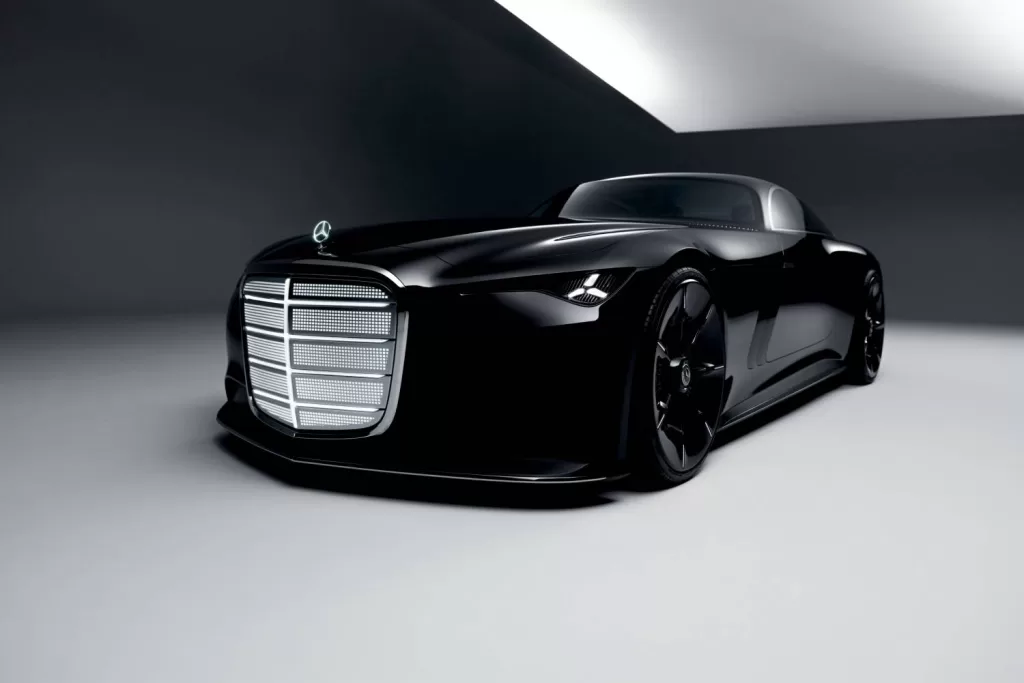
The Vision Iconic’s Sophisticated Styling
The new concept car was inspired by the opulent design of the 1930s and a touch of Art Deco, to which Mercedes Chief Design Officer Gorden Wagener referred to as a “sculpture in motion.” Its strong presence and flowing lines notably evoke the design language of the legendary 300 SL.
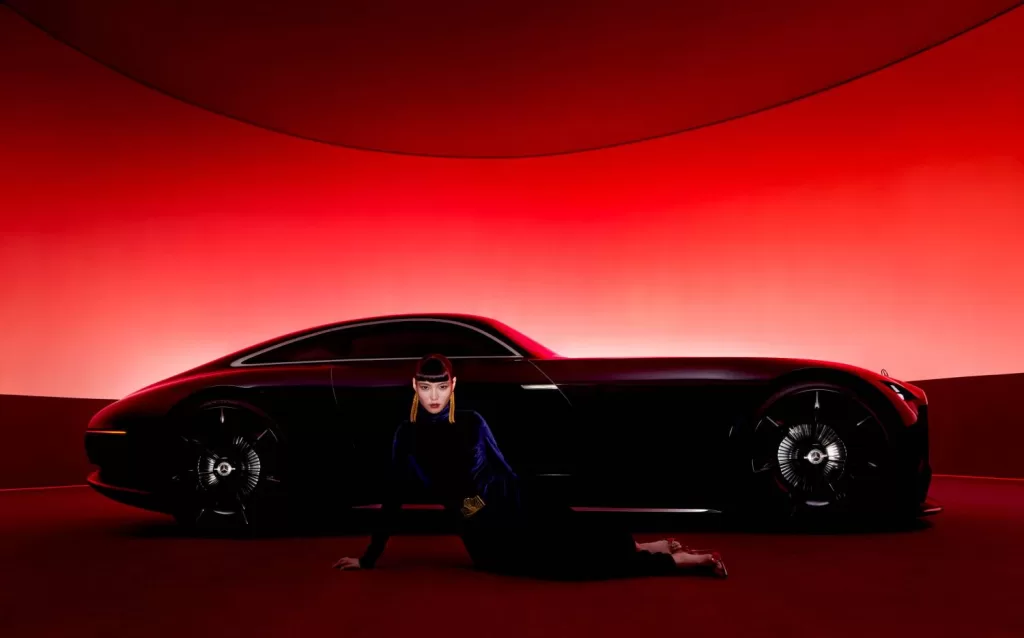
The car’s most striking feature comes in its radiator grille, which borrows the elements of classic Mercedes vehicles. This is additionally accentuated by its chrome-framed, smoked-glass structure with integrated lighting called the “iconic grille” that fuses tradition and the electric and digital era.
Interior Design
The Vision Iconic’s interior redefines luxury for the age of automated driving, creating a lounge-like experience that combines hyper-analog and digital elements. Features include a spacious front bench seat in deep blue velvet, Art Deco-inspired craftsmanship, and luxurious materials like mother-of-pearl marquetry and 17th-century straw marquetry on the floor.
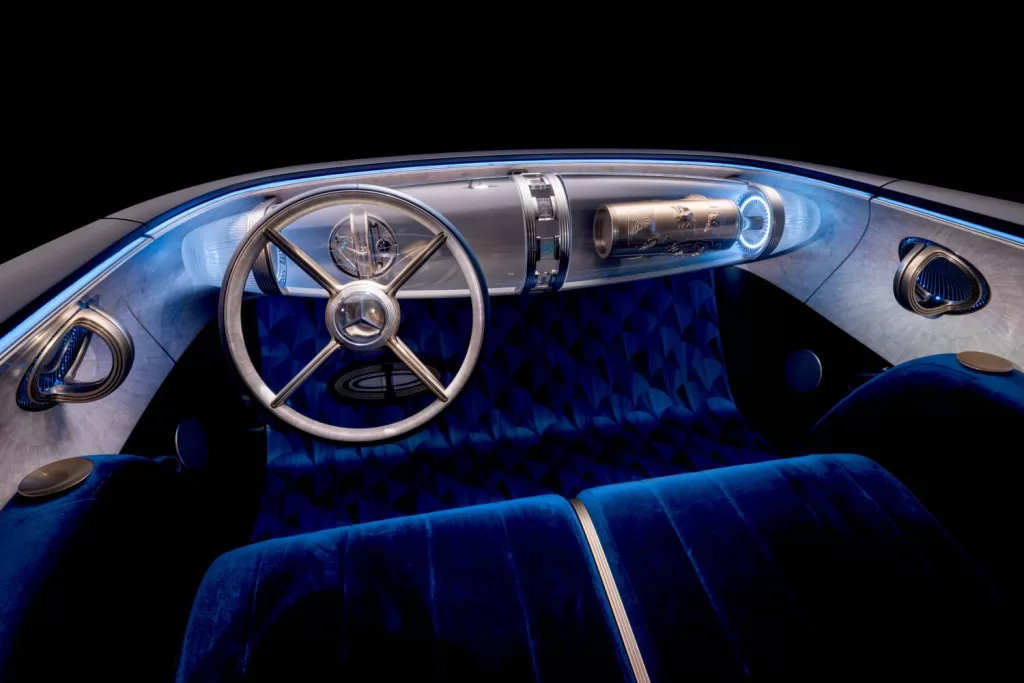
Mercedes artfuly integrated technology into the car’s styling, such as the “Zeppelin” glass instrument panel and a pillar-to-pillar screen concept, with one of the clocks acting as an AI companion.
Technology
Beneath the beauty, the Vision Iconic is a technological marvel. Mercedes engineered the auto for Level 4 automated driving, allowing occupants to fully surrender control to the automated tech of the car for elevated driving comfort. The vehicle also showcases revolutionary innovations like neuromorphic computing, which mimics the human brain to make AI calculations for autonomous systems 10 times more efficient.
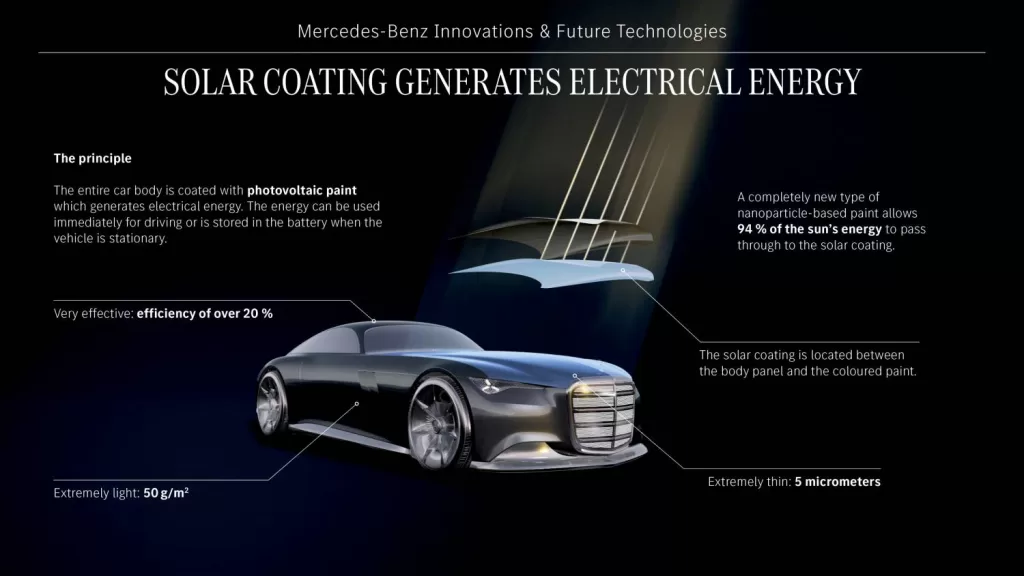
Moreover, a pioneering solar photovoltaic paint envelopes the Vision Iconic, which Mercedes claims to generate an extra 12,000 km per year for the auto under ideal environmental conditions. Additionally, a new steer-by-wire system promises maximum safety and easier maneuverability.
And There’s More
Furthermore, to translate Vision Iconic’s essence into a broader lifestyle statement, Mercedes-Benz unveiled an exclusively designed capsule collection of six outfits for men and women, echoing the show car’s Art Deco glamour and color scheme. With these, the Vision Iconic is more than a car: it’s a definitive statement on the future of design, technology, and luxury from the three-pointed star.

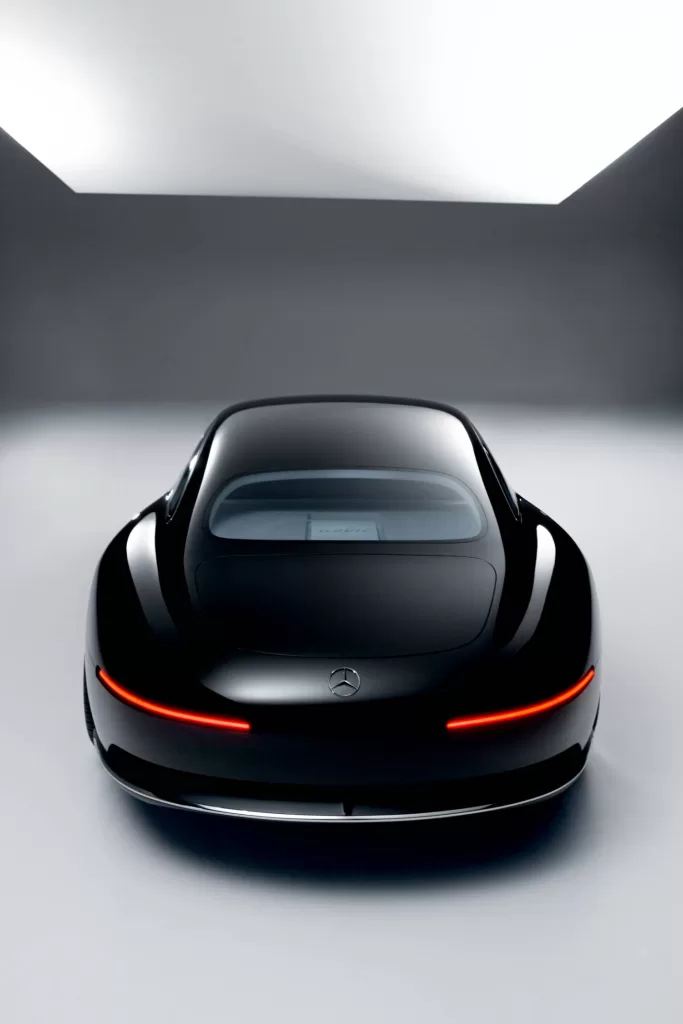
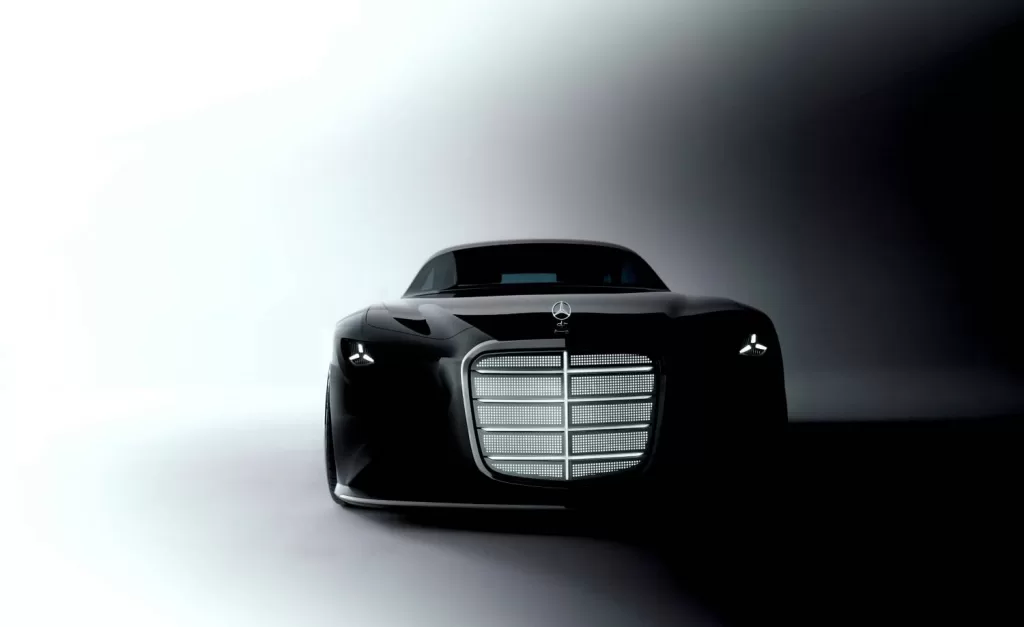
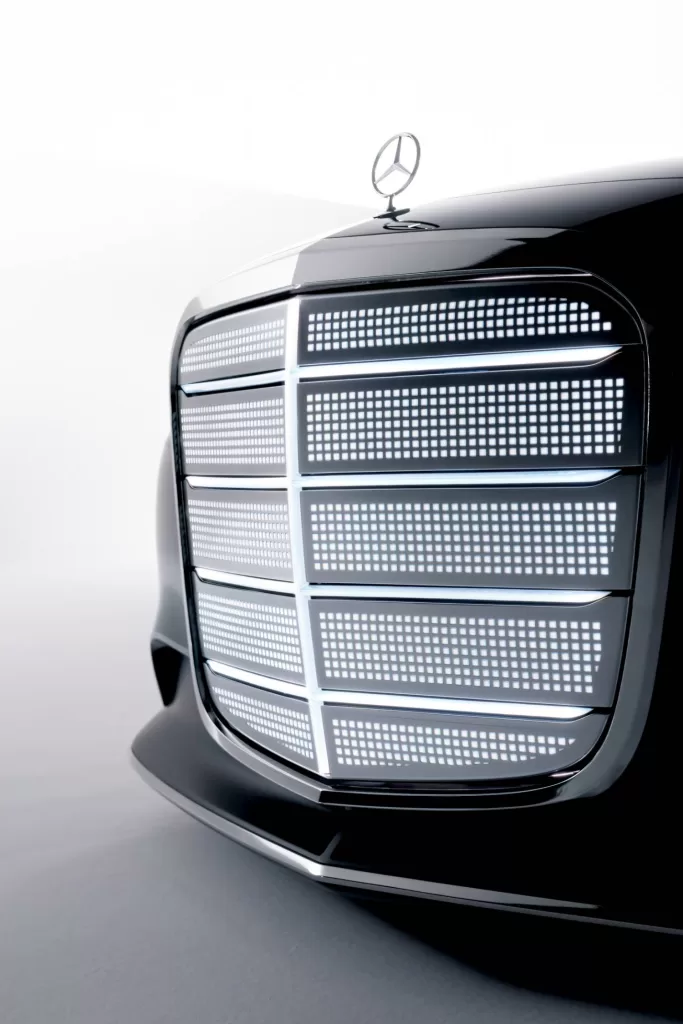
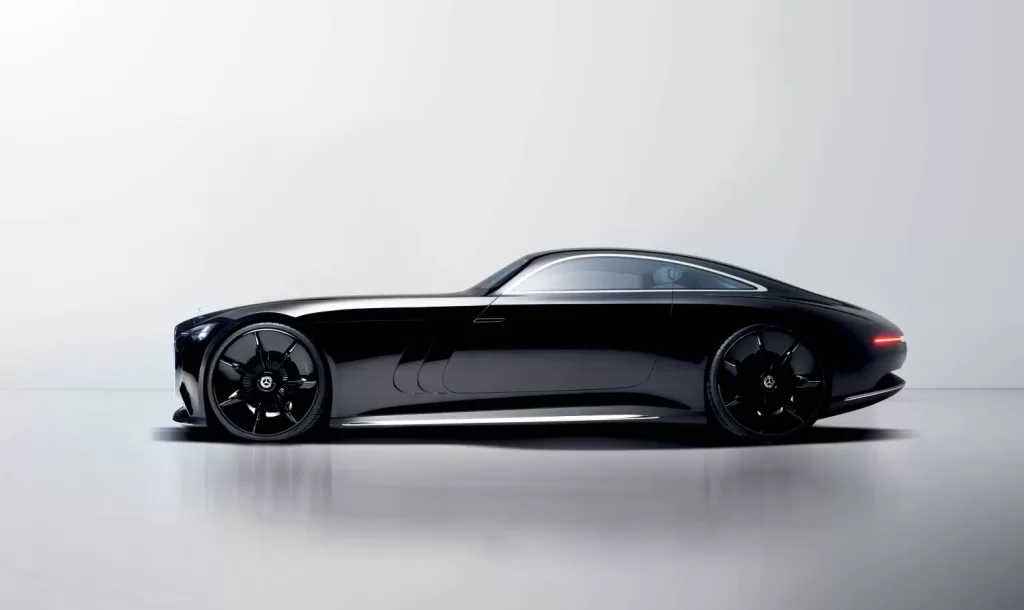


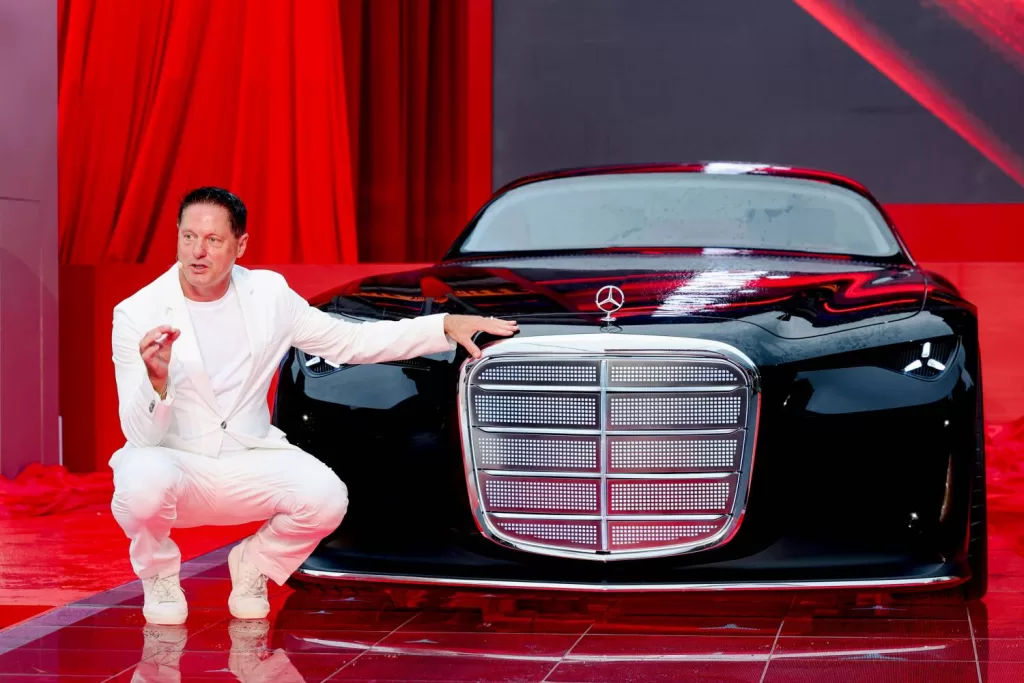

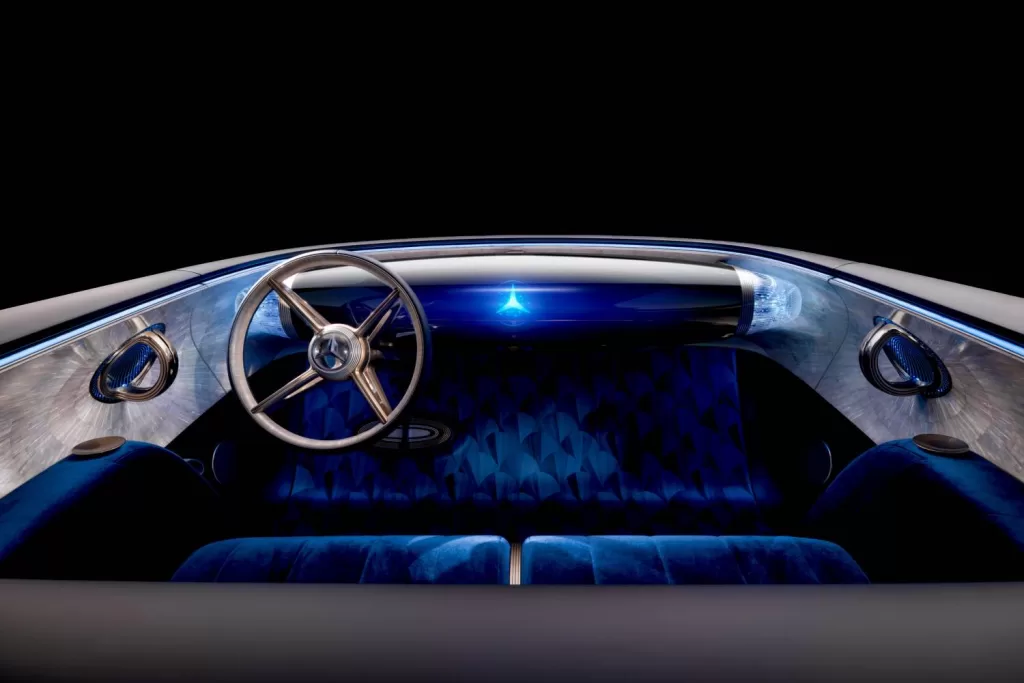
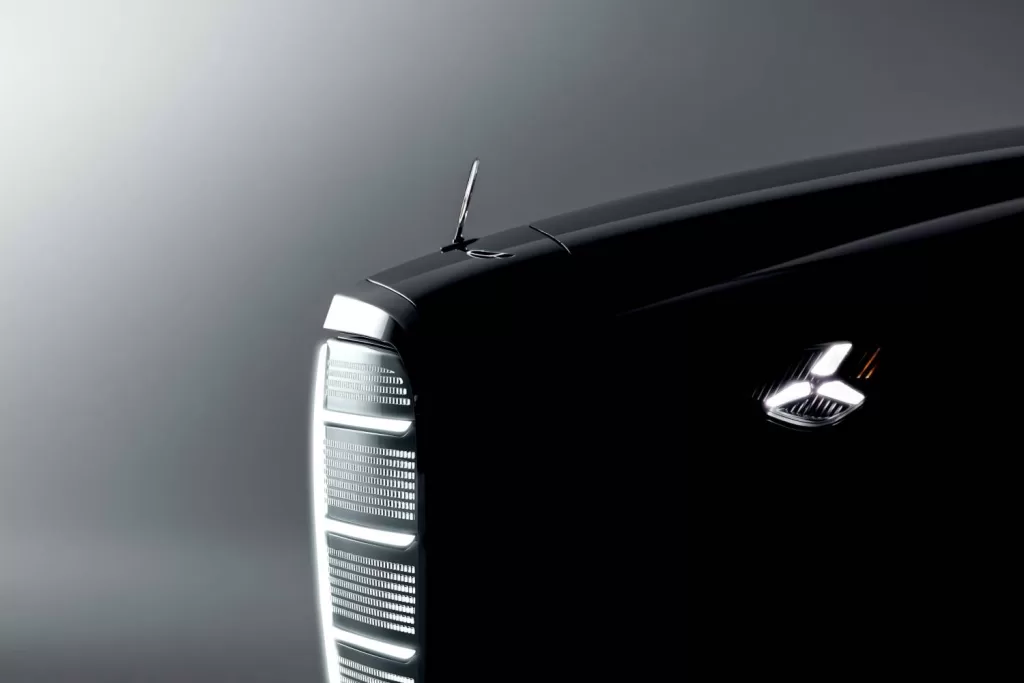
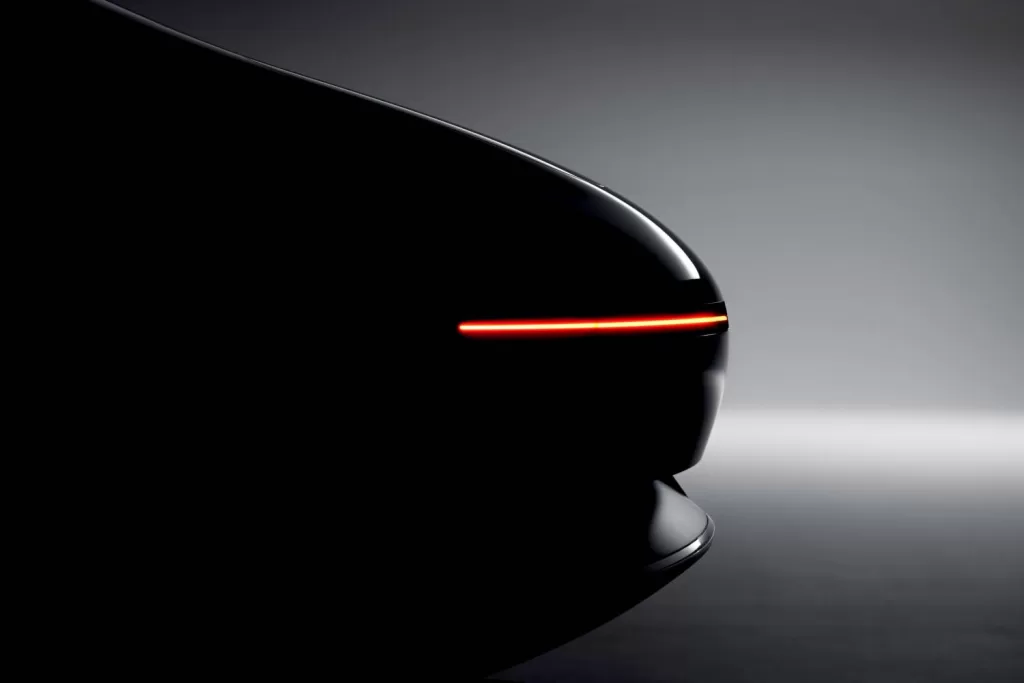
The post Mercedes Unveils Vision Iconic, A Bridge Between Heritage And The High-Tech Future appeared first on BenzInsider.
When Heritage Meets Innovation On The Open Road 18 Oct 3:34 AM (4 days ago)
The automotive world is evolving at an unprecedented pace, which is evident in the quick transition of Mercedes-Benz models. Electric vehicles, cutting-edge technology, and modern design philosophies are reshaping how we experience driving
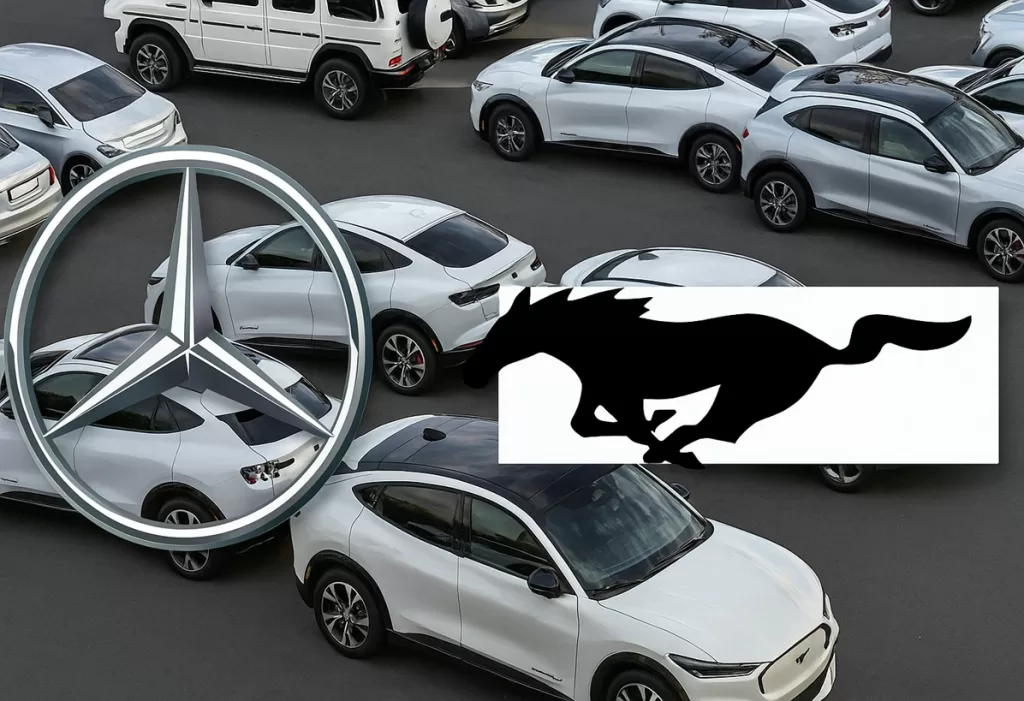
Yet, for many enthusiasts, there remains a longing for the nostalgia and character of classic automobiles. Few vehicles embody this delicate balance between heritage and innovation as effectively as the Mercedes-Benz in Germany and Ford Mustang Mach-E in the US.
A Legacy Reimagined
Like Mercedes-Benz being the symbol of German automotive excellence, the Mustang has long been a symbol of American automotive culture. Its roaring engines, sleek lines, and performance-driven engineering have captured the hearts of drivers for generations. The Mustang Mach-E, however, represents a bold reimagining of this iconic legacy. By embracing electric power while retaining the soul of the classic Mustang, it bridges the gap between past and future. The design cues (muscular silhouette, signature lighting, and aggressive stance) honor the Mustang’s heritage, yet its electric drivetrain propels it confidently into the modern era.
Performance Without Compromise
Many drivers fear that moving to an electric platform might mean sacrificing the visceral thrill associated with traditional muscle cars. The Mustang Mach-E dispels that notion. With instant torque, precise handling, and rapid acceleration, it delivers a driving experience that rivals conventional performance vehicles. The carefully tuned suspension ensures stability at high speeds, while advanced regenerative braking enhances control and efficiency. Drivers can enjoy all the excitement of a classic Mustang with the sophistication and sustainability of modern electric technology.
Technology That Elevates the Journey
Innovation isn’t limited to the powertrain. The Mustang Mach-E integrates an array of intelligent technologies designed to enhance every aspect of driving. A cutting-edge infotainment system keeps navigation, entertainment, and vehicle management at your fingertips, while advanced driver-assistance features prioritize safety and convenience. From adaptive cruise control to lane-keeping assistance, this vehicle demonstrates how technology can enrich the driving experience without detracting from the joy of being behind the wheel.
Sustainability Meets Style
Electric vehicles are more than a trend; they are a critical step toward reducing environmental impact. By adopting the Mustang Mach-E, drivers embrace sustainability without compromising on style or performance. Its efficient electric motor and battery system reduce emissions, making it a responsible choice for environmentally conscious drivers. Meanwhile, the vehicle’s sleek design, customizable interiors, and attention to detail ensure that sustainability and aesthetics go hand in hand.
The Mustang Mach-E Experience in Los Angeles
For drivers in Southern California, the allure of the Mustang Mach-E is hard to resist. The city’s open roads, scenic highways, and vibrant urban landscapes provide the perfect playground to explore this electrifying vehicle. Whether commuting through downtown traffic or cruising along the coast, the Mach-E offers a seamless blend of performance, comfort, and cutting-edge technology. Those interested in embracing this fusion of heritage and innovation can explore options like the Ford Mustang Mach-E for Sale in Los Angeles to find a model that fits their lifestyle.
Driving Toward the Future
The Mustang Mach-E is more than just a car; it’s a statement. It shows that it is possible to honor tradition while embracing progress, and that innovation need not erase the identity of a beloved automotive icon. As electric vehicles become increasingly mainstream, the Mach-E sets a precedent for how legacy brands can evolve gracefully, offering drivers both nostalgia and modern excitement in a single package.
By seamlessly integrating heritage, performance, and sustainability, the Mustang Mach-E embodies the best of both worlds. It proves that the thrill of the open road can coexist with responsible innovation, providing drivers with a forward-looking automotive experience that respects the past while accelerating into the future.
The post When Heritage Meets Innovation On The Open Road appeared first on BenzInsider.
Mercedes-Benz Consolidates Sales And Financial Services Amidst Sales Dip 10 Oct 6:17 AM (12 days ago)
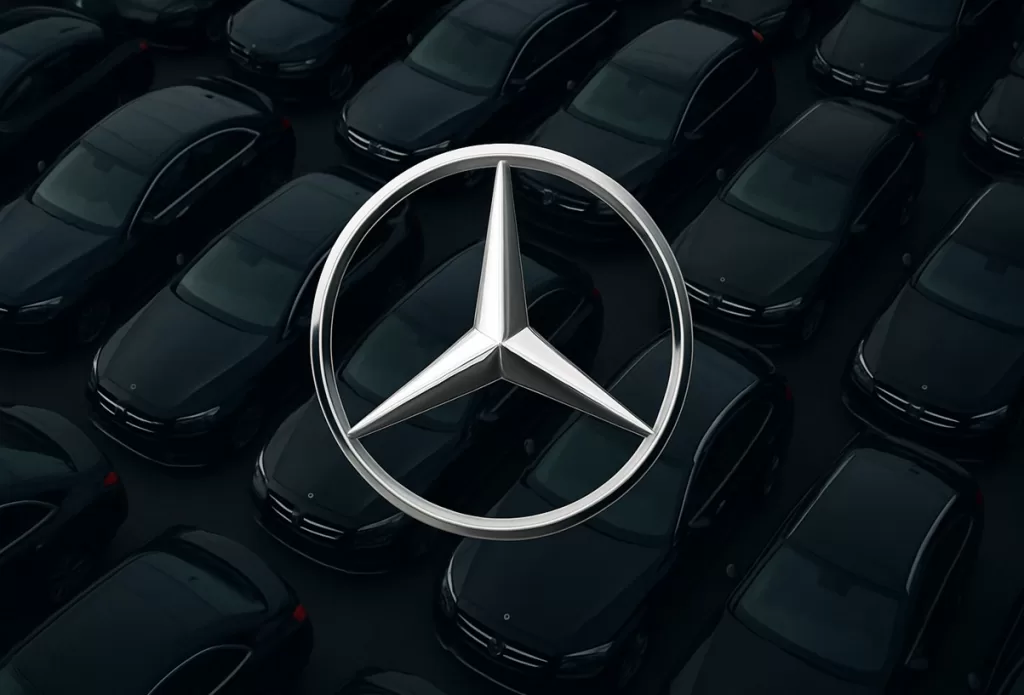
Mercedes-Benz is on its way to a major corporate overhaul. The German luxury automaker recently announced its plans to merge its vehicle sales and financial services arms into a single entity by the end of 2025.
The move aligns with the three pointed-star marque’s goal of streamlining its organizational structure by merging Mercedes-Benz Mobility AG into the parent company, Mercedes-Benz AG, by December 31 this year, subject to regulatory approvals. The luxury automaker is also looking to create a more integrated customer experience and operational efficiency.
The restructuring comes as the company attempts to counter recent market headwinds. The announcement follows a challenging period for the Cars division, which recently reported a 3% quarter-on-quarter and a steeper 12% year-on-year sales decline from the same period last year. While the merger integrates most functions, the company will retain certain essential financial services under the Mercedes-Benz Financial Services unit to ensure strict adherence to regulatory standards.
Furthermore, the overhaul marks a significant leadership transition. Franz Reiner, a veteran who began his career with Daimler-Benz in 1992 and currently serves as Chairman of Mercedes-Benz Mobility, has expressed his intention to step down from the company “at his own request” at the time of the merger.
Harald Wilhelm, Chairman of the Mobility supervisory board, praised Reiner’s “visionary and value-driven leadership” that shaped the financial services division for over three decades. Looking ahead, the automaker has appointed Peter Henn, currently the head of US financial services, to take on the global leadership role for the division effective May 1, 2026.
In the interim, Tolga Oktay will manage the financial services business, reporting directly to Wilhelm.
The post Mercedes-Benz Consolidates Sales And Financial Services Amidst Sales Dip appeared first on BenzInsider.
Mercedes And BMW Lead In Bridging Gap Between Level 2 And 3 Autonomous Driving 4 Oct 8:06 AM (17 days ago)
- Mercedes and BMW are focusing on bridging the gap between Level 2 and 3 autonomous driving by ensuring that the transition will occur under a more practical and accessible middle ground for customers.
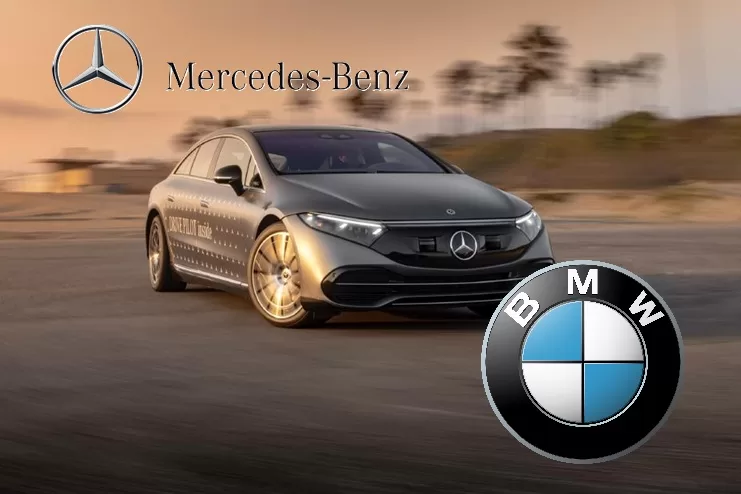
One focus of the ongoing race in the automotive landscape centers on advancing autonomous driving technology. Leading the charge are rival European car manufacturers Mercedes-Benz and BMW.
It should be noted, however, that the automakers are not just centered on introducing full autonomy. Instead, they are taking things on a measured approach, starting with bridging the lucrative void between the current Level 2 systems and Level 3 capabilities for a more practical and accessible middle ground.
The Appeal of the “Plus”
In Munich’s recent IAA Mobility, BMW and Mercedes-Benz unveiled new models featuring sophisticated, upgraded Level 2 systems. These systems offer greater vehicle control than their predecessors, but at a more affordable price than a completely hands-off, eyes-off Level 3 setup.
While there is no official industry classification, these systems are commonly called “Level 2 Plus” or “Level 2 Plus Plus,” depending on their features. Level 2 Plus typically allows for hands-off highway driving and automatic lane changes, while Level 2 Plus Plus enables a vehicle to navigate urban environments.
The crucial distinction is that regardless of the number of “pluses,” the driver always remains responsible for the vehicle. This shift in focus signals a major market pivot away from Level 3.
The Obstacles to Full Autonomy
Both Mercedes and BMW already offer level 3 autonomy, which allows a driver to disengage from driving in specific situations. However, its implementation is limited to expensive, high-end vehicles and can only be activated in a narrow range of scenarios.
The high cost of ensuring the redundant safety systems required for Level 3 and its restricted use has made it a less attractive option for mass-market adoption. This is why some automakers, like Stellantis, have canceled their plans to roll out Level 3 technology, deeming the expense too great for the limited utility.
Experts in the industry predict that while Level 3 will exist, its market volume will be significantly smaller than the more accessible and practical Level 2 Plus Plus systems.
A Rapidly Evolving Landscape
The development of assisted driving technology is moving rapidly, partly fueled by a push from Chinese automakers who view it as a key competitive advantage. This has created a scenario in Europe that mirrors China’s from a few years ago, where Level 2 Plus systems are becoming a major selling point.
In fact, some analysts argue that once European customers experience a well-functioning Level 2 Plus system that goes beyond basic safety functions, its adoption will soar. Legislation, such as the new UN regulation on driver assistance systems reinforce such sentiment, which provides a clear framework for automakers to introduce these advanced features.
For instance, BMW’s Ride Pilot system has become the first to be certified under these new rules.
Shifting Customer Perception and Business Models
Despite the technological advancements, a significant hurdle remains: customer acceptance. Many drivers have been resistant to mandated, and often poorly functioning, advanced driver assistance systems (ADAS).
The key to overcoming this resistance is precision. As the quality of these systems improves, customers are more likely to appreciate and use them.
Another point of contention is how customers will pay for these features. Some automakers, particularly in China, are standardizing the necessary hardware and offering the features for free.
In contrast, companies like Ford, Mercedes, and Tesla are exploring subscription-based models to unlock ADAS features. Fortunately, the cost of ADAS is rapidly falling as automakers move toward software-defined platforms. This will make these sophisticated systems more standard on vehicles and, in turn, increase customer acceptance.
The post Mercedes And BMW Lead In Bridging Gap Between Level 2 And 3 Autonomous Driving appeared first on BenzInsider.
Next-Gen Mercedes-Benz GLC Debuts With A New Look 7 Sep 12:05 PM (last month)
- The next-gen Mercedes-Benz GLC is redefining the three-pointed star marque’s EV playbook with all-new features from the ground up.
- The EV even has an optional Vegan Package.
The automotive landscape is getting too crowded nowadays, especially with the growing competition from Chinese EVs in the international market. After continuously struggling with its EV sales, Mercedes-Benz has taken the challenge more seriously than ever. Hence, it reinvented its most popular SUV model, the GLC, combining its proprietary EQ Technology with it.
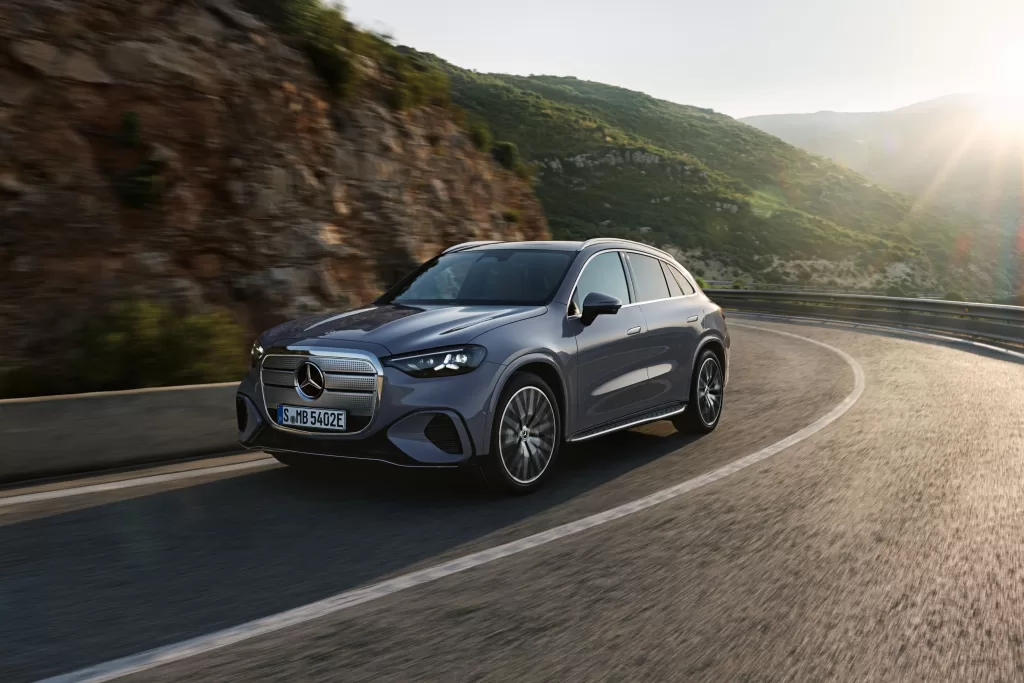
New Exterior Design of the Mercedes-Benz GLC
The first thing that grabs attention about the new GLC is its enhanced design language. Mercedes has boldly reimagined its iconic grille, transforming it into an illuminated, high-tech masterpiece that announces the dawn of a new era, but with a subtle callback to the vintage grille found in the likes of the Pullman.
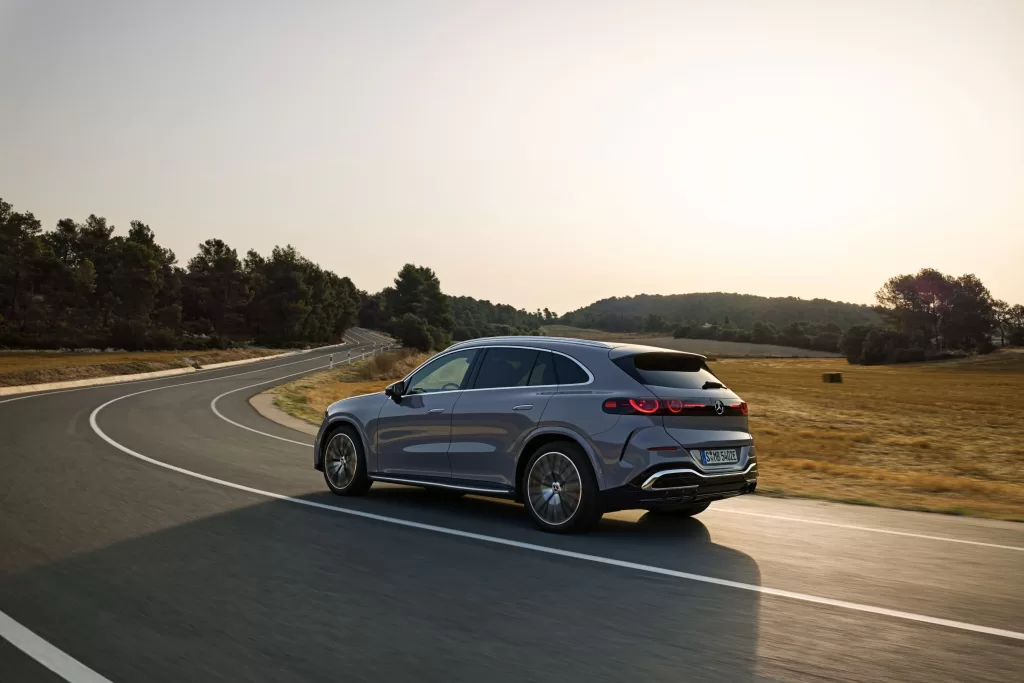
Mercedes has dynamically sculpted the overall silhoutte of the new GLC with pronounced wheel arches and a purposeful stance to make it radiate a mix of sophistication and conficence.
Interior Design
It’s the interior that truly stuns. The GLC’s cabin immediately greets people with its seamlessly integrated MBUX Hyperscreen. At a monumental 99.3 centimeters, or 39.1 inches, it is the largest display ever featured in a Mercedes-Benz. This isn’t just a screen; it’s a portal, an immersive spatial experience that blends physical and digital worlds.
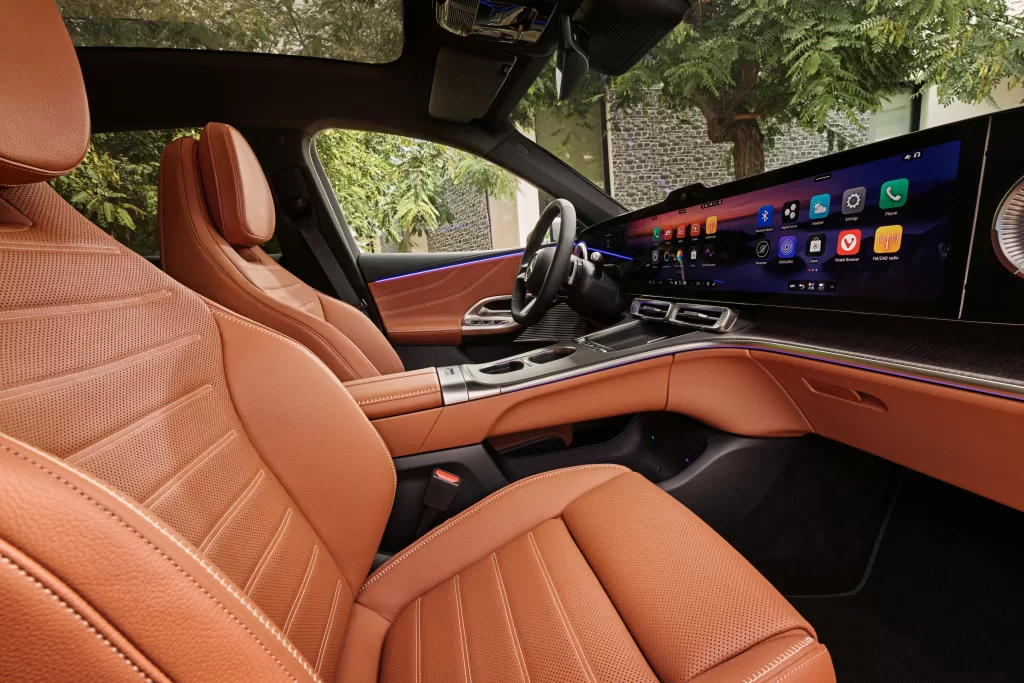
The high-resolution display, with its matrix-backlight technology, is a feast for the eyes. Then, when combined with the warm, inviting ambient lighting and the optional SKY CONTROL panoramic roof with its 162 illuminated stars, it creates a unique and welcoming “Welcome Home” feeling.
Underpinning this digital revolution is the all-new Mercedes-Benz Operating System (MB.OS), an AI-driven “superbrain” that integrates and controls every facet of the vehicle. Just as a human brain processes thoughts and senses, the MB.OS leverages powerful chips to learn driver preferences and make real-time decisions for a more intuitive, safer experience. A chip-to-cloud architecture ensures the vehicle is always up-to-date with over-the-air updates.
Mercedes hasn’t just focused on technology, but on sustainability and comfort as well. In a world first, the new GLC offers an optional Vegan Package, a suite of independently certified, animal-free interior materials. The new seats themselves are certified by the German AGR (Organization for Healthy Backs).
Performance
On the road, the all-new GLC is a masterclass in dynamic refinement. The One-Box braking system delivers a remarkably consistent and assured pedal feel, smoothly blending energy recovery with friction braking. This system is so efficient that it handles over 99% of all braking processes in everyday driving, recuperating an impressive amount of energy to extend the vehicle’s range.
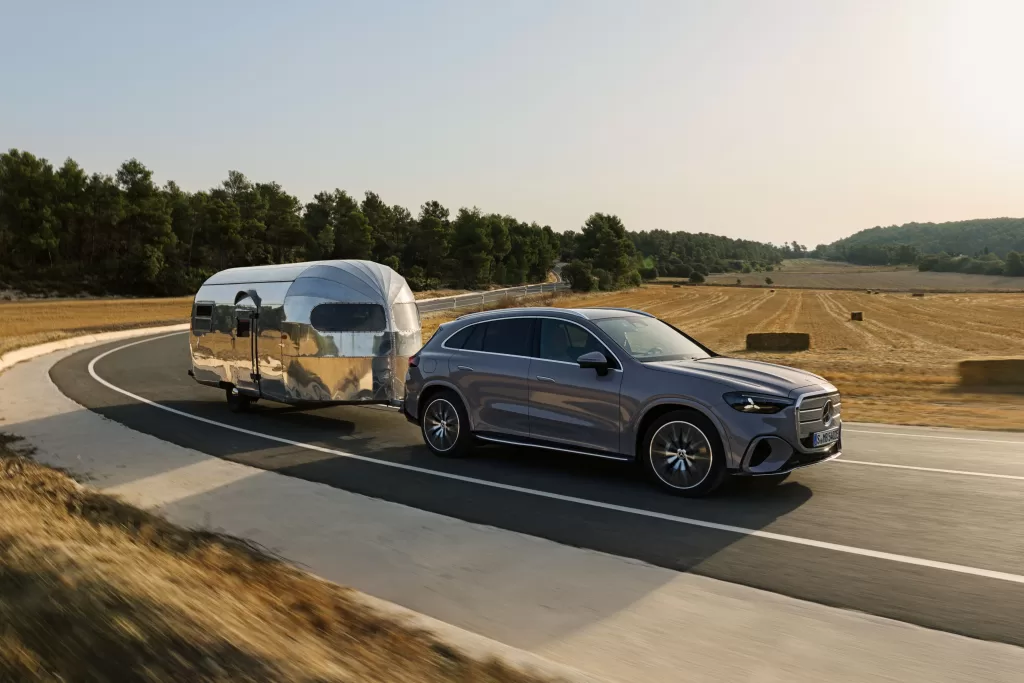
An intelligent air suspension system, borrowed from the flagship S-Class, provides a supreme ride that glides over bumps. At the same time, 4.5-degree rear-axle steering offers a level of agility that belies the vehicle’s size.
The new GLC’s electric powertrain, with its advanced 800-volt system and a usable battery capacity of 94 kWh, addresses the biggest concern of many potential EV buyers: range anxiety. The top-of-the-line GLC 400 4MATIC offers a provisional range of up to 713 kilometers and can recharge up to 303 kilometers in just ten minutes.
The integrated reservation function for charging stations, a feature offered by Mercedes for the first time, streamlines the public charging process. The luxury automaker also equipped the GLC with bidirectional charging tech, allowing it to act as a power source for a home or the grid.
Final Thoughts
The new Mercedes-Benz GLC arrives as a breath of fresh air. It doesn’t just chase trends but sets them.
From its bold new design and groundbreaking Hyperscreen to its AI-powered “superbrain” and thoughtful sustainability features, the new GLC is more than just a car—it’s an intelligent, versatile, and incredibly smooth companion that is perfectly poised to continue Mercedes’ legacy as a global leader even in the age of electrification.
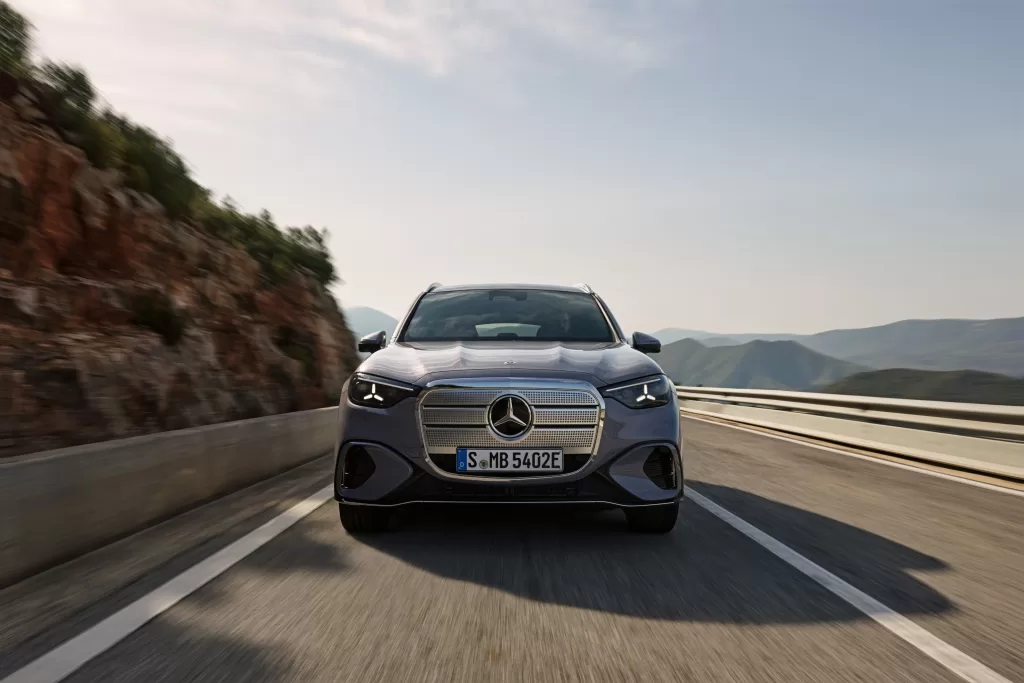
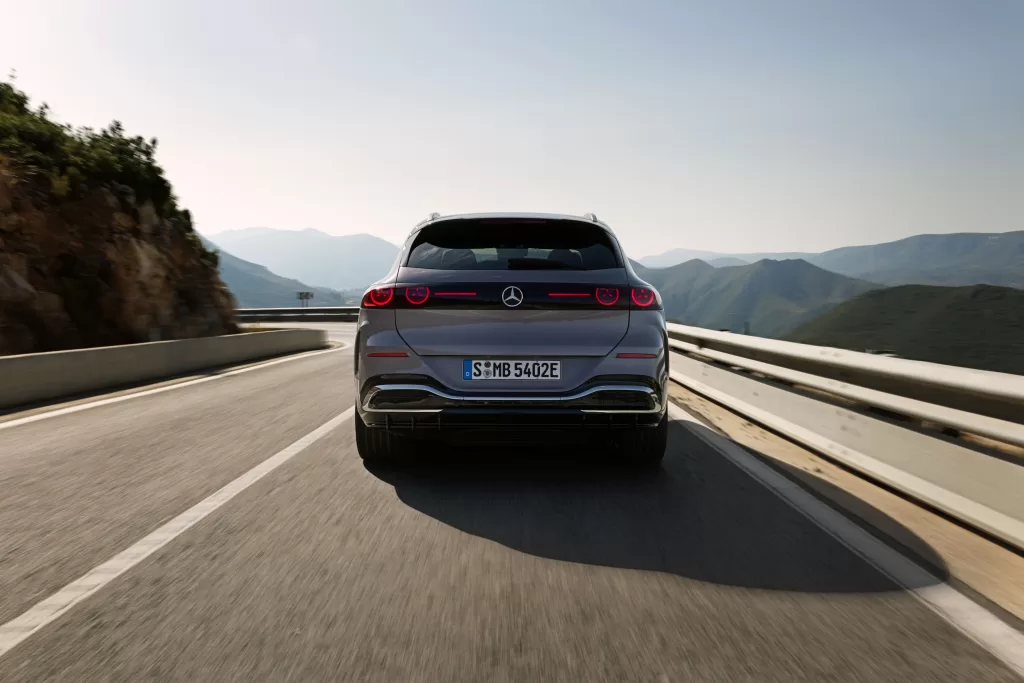
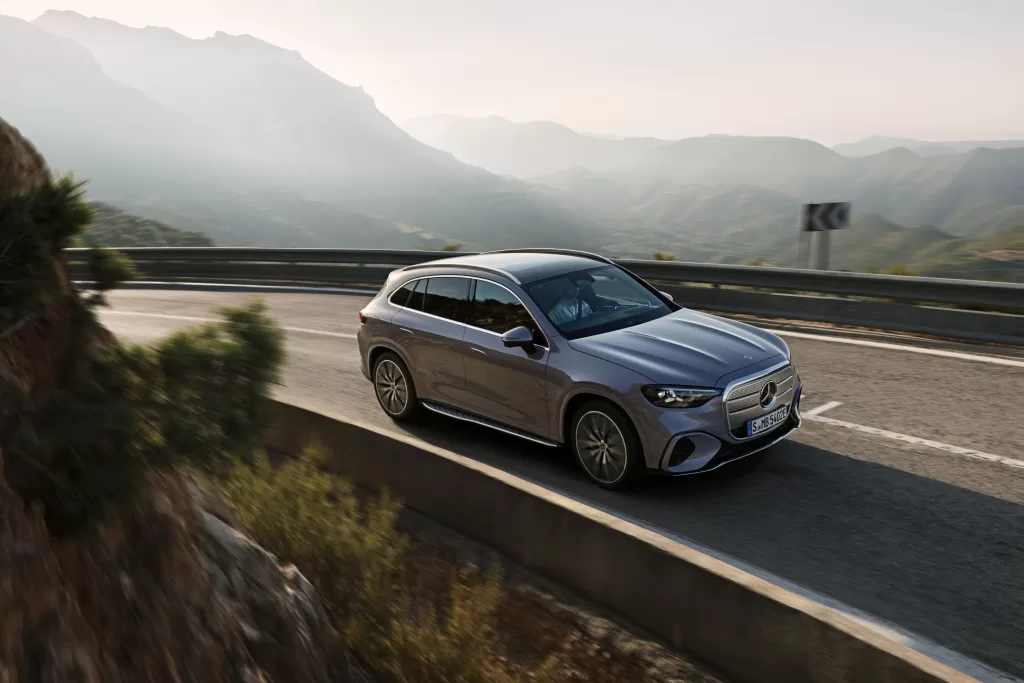



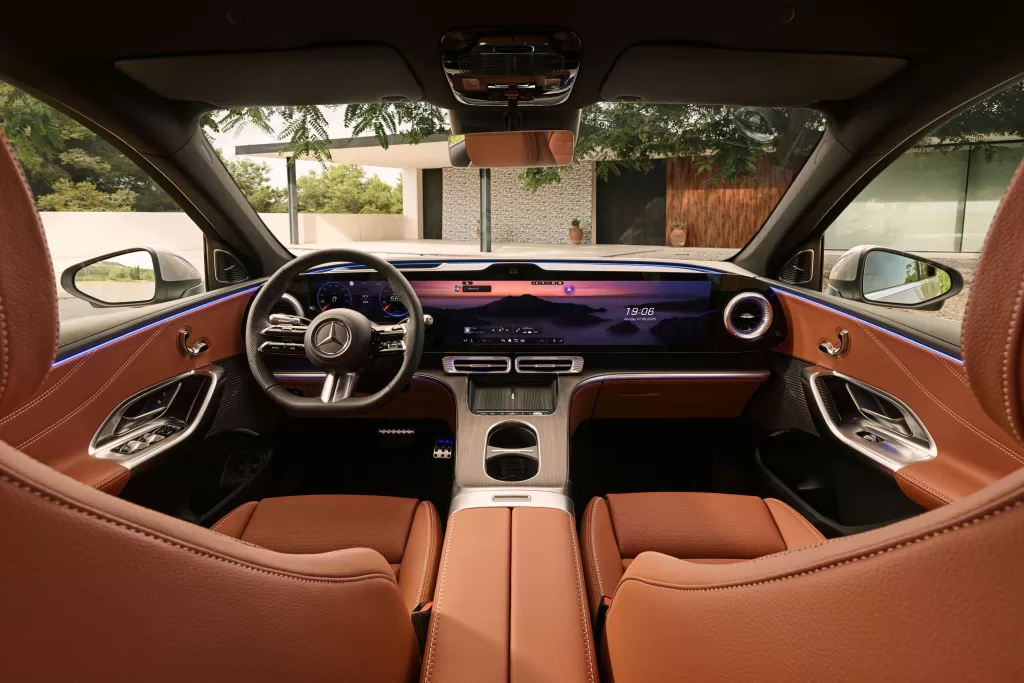
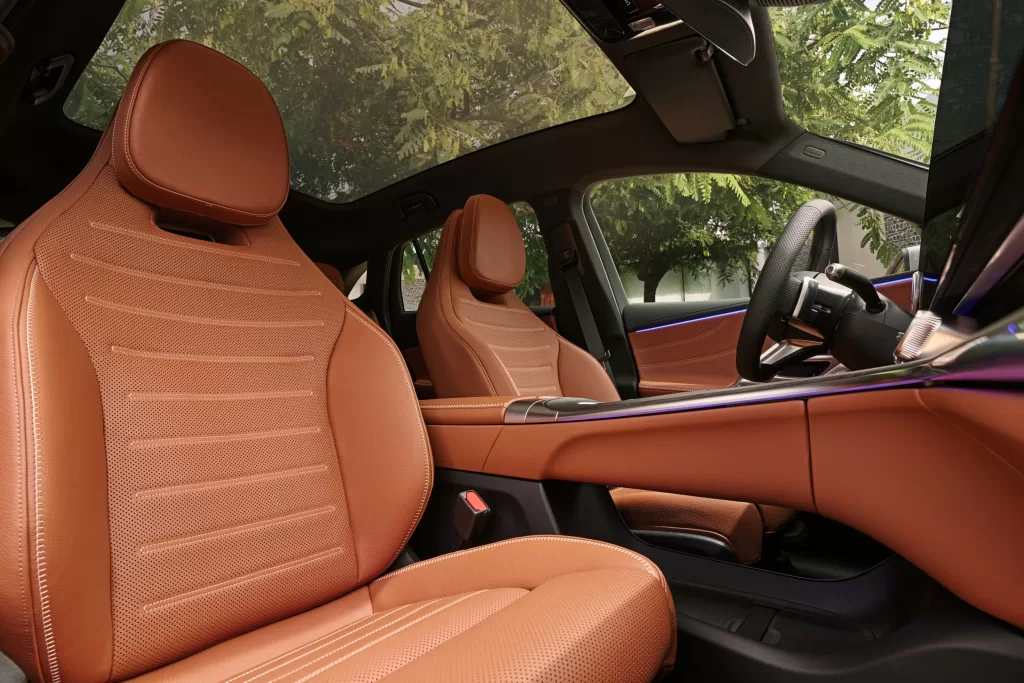

The post Next-Gen Mercedes-Benz GLC Debuts With A New Look appeared first on BenzInsider.
Mercedes-AMG GT XX Concept Redefines Electric Performance And Endurance 30 Aug 12:42 AM (last month)
- Mercedes-AMG’s latest prototype, the GT XX Concept, recently dominated the Nardò circuit in Italy, logging over 40,000 kilometers in under eight days while maintaining an average velocity of 300 km/h.
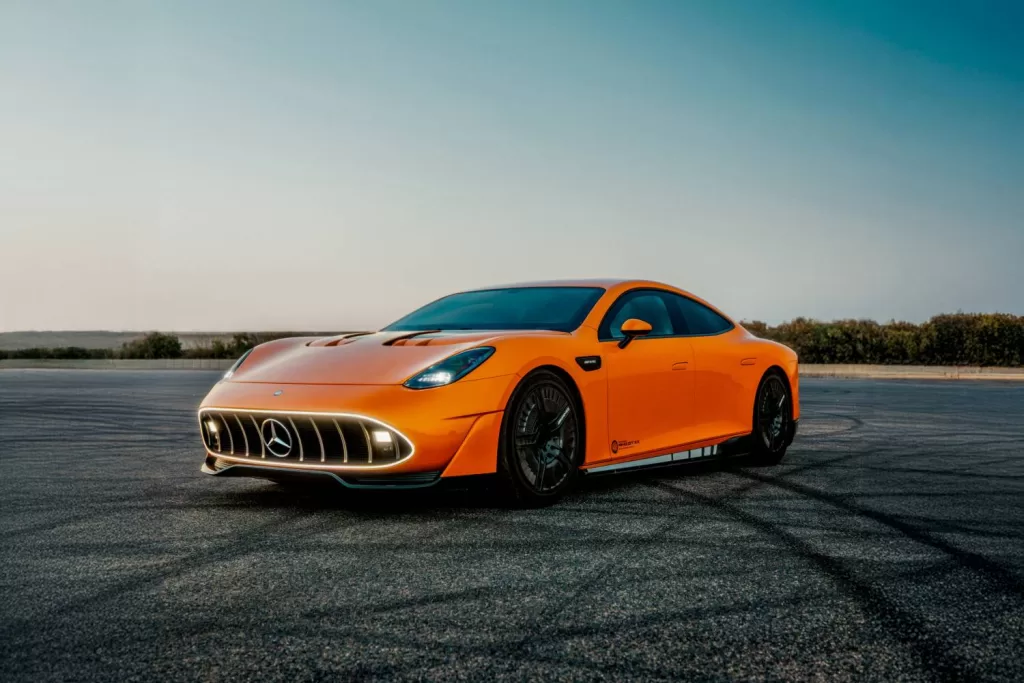
According to Mercedes-Benz, the AMG GT XX Concept recently recorded a 40,000-kilometer run at the Nardò circuit in Italy. The feat, which took eight days to finish under an average speed of 300 km/h, established 25 new benchmarks for long-range electric vehicles.
Two identical models alternated shifts, repeatedly surpassing the prior 24-hour distance milestone by wide gaps—14 times total—under grueling heat and nonstop operation. The accomplishment highlights AMG’s shift toward electrification, drawing from over a century of racing triumphs.
Mercedes emphasizes how this electric pioneer echoes past icons like the C111, now adapted for battery-driven supremacy.
AMG GT XX Powertrain Technology
At the core of the AMG GT XX lies a trio of axial-flux engines paired with a battery featuring direct liquid chilling, tech slated for AMG.EA production models soon. This setup ensured relentless output without throttling, even amid intense demands.
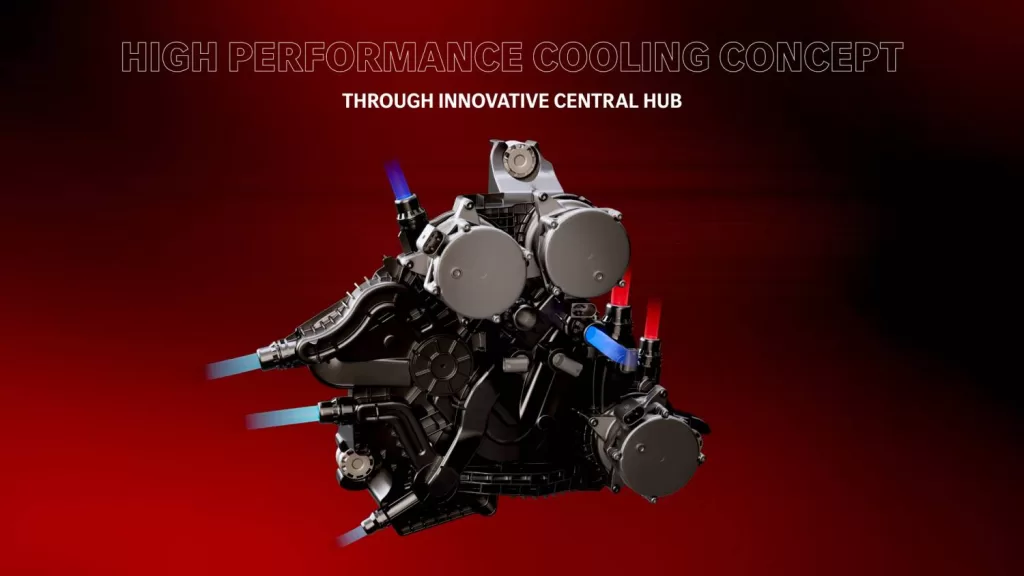
A standout feature is the Central Coolant Hub (CCH), a compact unit managing fluid distribution to drives, electronics, and cells via smart valves and sensors. Additionally, the system eliminates more weight and squeezes out more range compared to traditional systems.
Complementing this is a passive floor-mounted heat dissipator that eases radiator load, allowing sealed air vents for better efficiency. Such elements proved vital during Nardò’s trials, where the vehicles sustained peak performance across driving and recharging cycles.
Aerodynamic and Energy Receovery
Aerodynamics played a pivotal role, with a drag figure of just 0.19 achieved through refined shapes, including a tapered nose, extended diffuser, and vented wheels clad in carbon. These tweaks cut resistance significantly, equating to shedding substantial mass at highway paces, while generating ample downforce sans active spoilers.
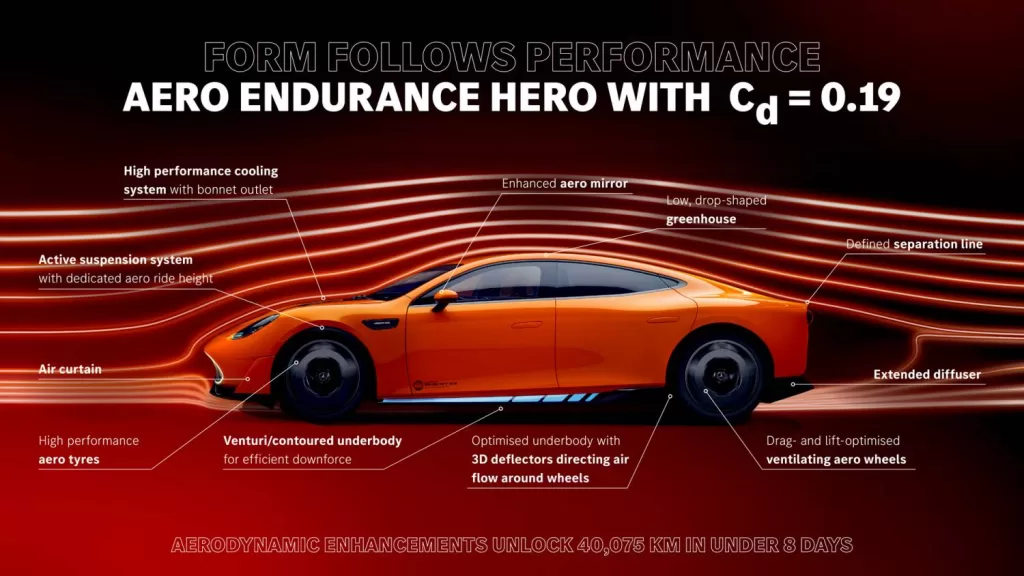
Charging capacity matched the speed, averaging 850 kW via custom Alpitronic stations adapted for 1,000-amp flows through standard plugs. A makeshift high-power hub, erected in months, mirrored Mercedes’ global network, enabling swift pit stops that kept momentum unbroken.
Smart Systems Inspired by Racing Heritage
Software drew heavily from Formula 1 insights, with a battery overseer using virtual probes to monitor cell health in real-time, optimizing energy use. Predictive tools guided drivers on pace and braking, integrating GPS for precise recuperation up to 0.6g, recycling power efficiently.
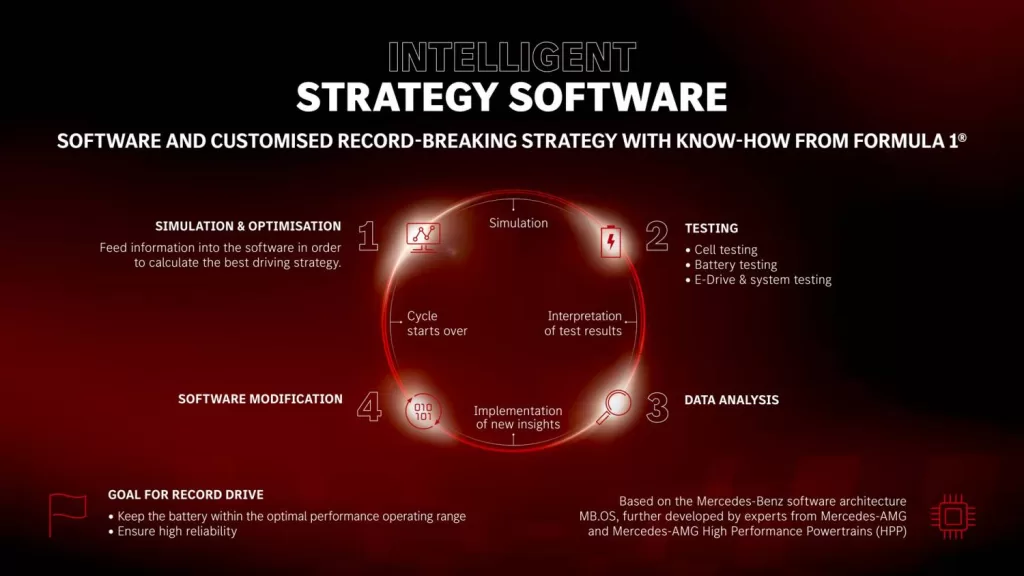
This intelligence extended to operations, where simulations and live adjustments from experts countered variables like wind or wear, ensuring strategy alignment.
Interfaces and Future Tech in the AMG GT XX
Furthermore, the cabin boasts a driver-focused setup on MB.OS, with screens showing key metrics like charge status and stint progress, plus steering controls for quick tweaks. An AR-equipped helmet overlays data—speeds, laps, track cues—enhancing focus, especially at night.
Lastly, innovations populate the car’s tech, including plasma devices for invisible airflow tweaks, 3D-printed custom seat inserts from body scans for an ideal fit, and biotech fabrics. ThrillAR lets users virtually replay the run via mixed reality.
Partners like Michelin supplied efficient tires, Microsoft handled data analytics, and Signify ensured safety on track.

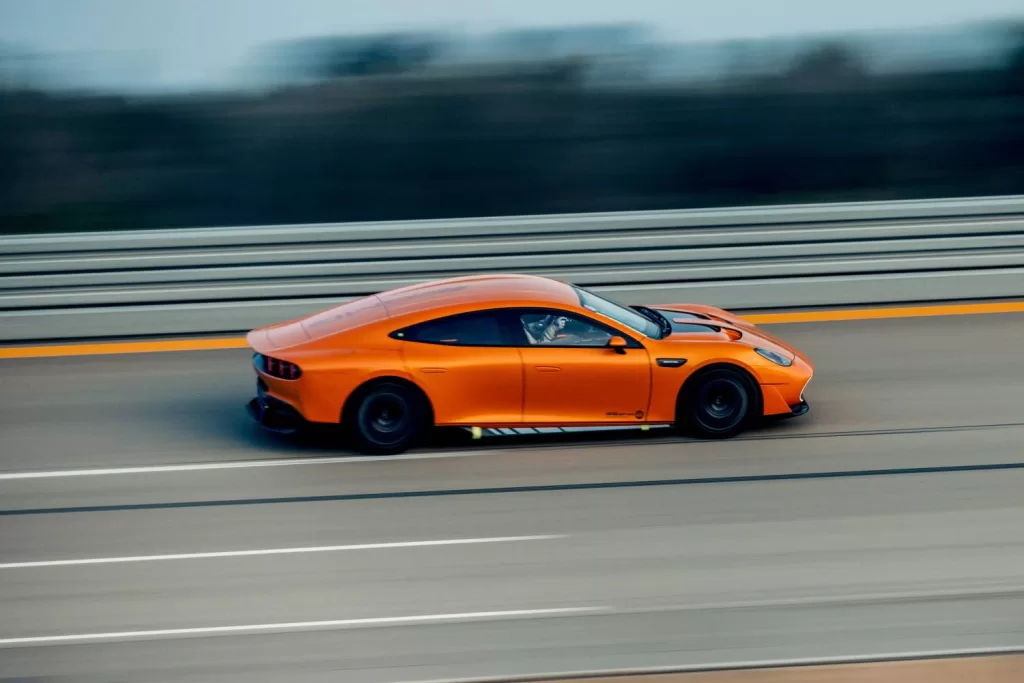

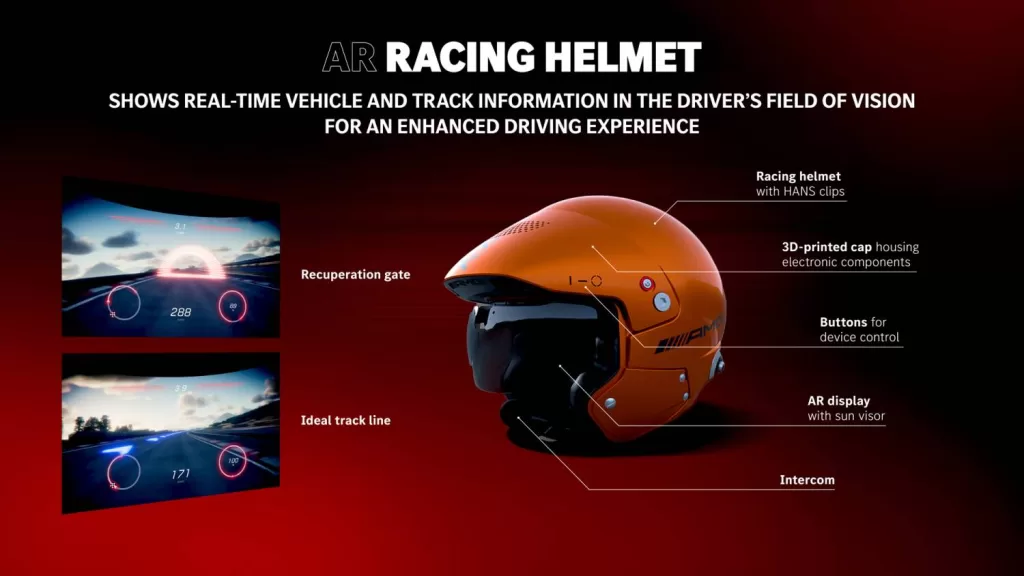
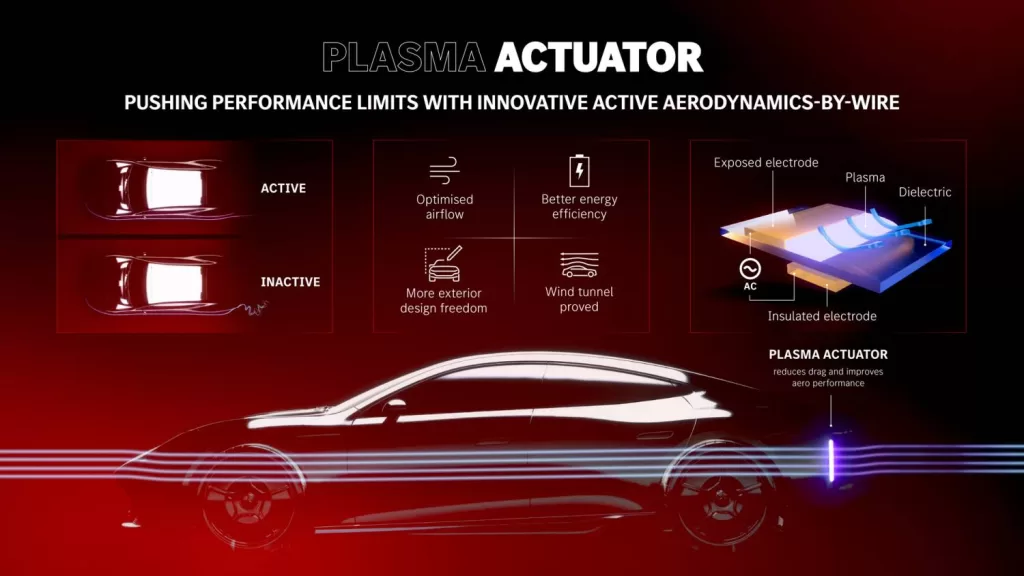


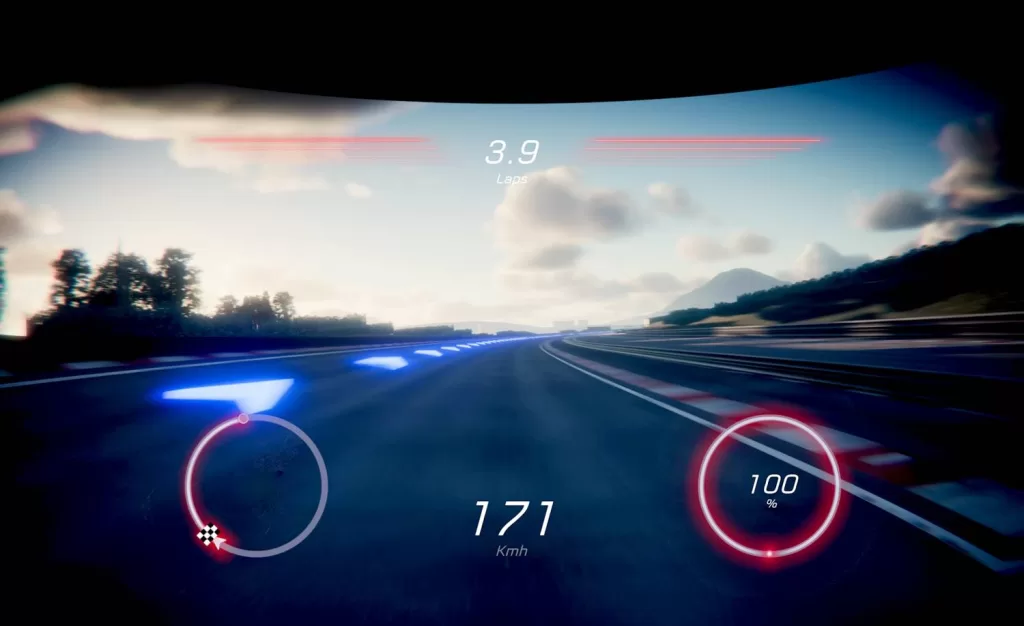
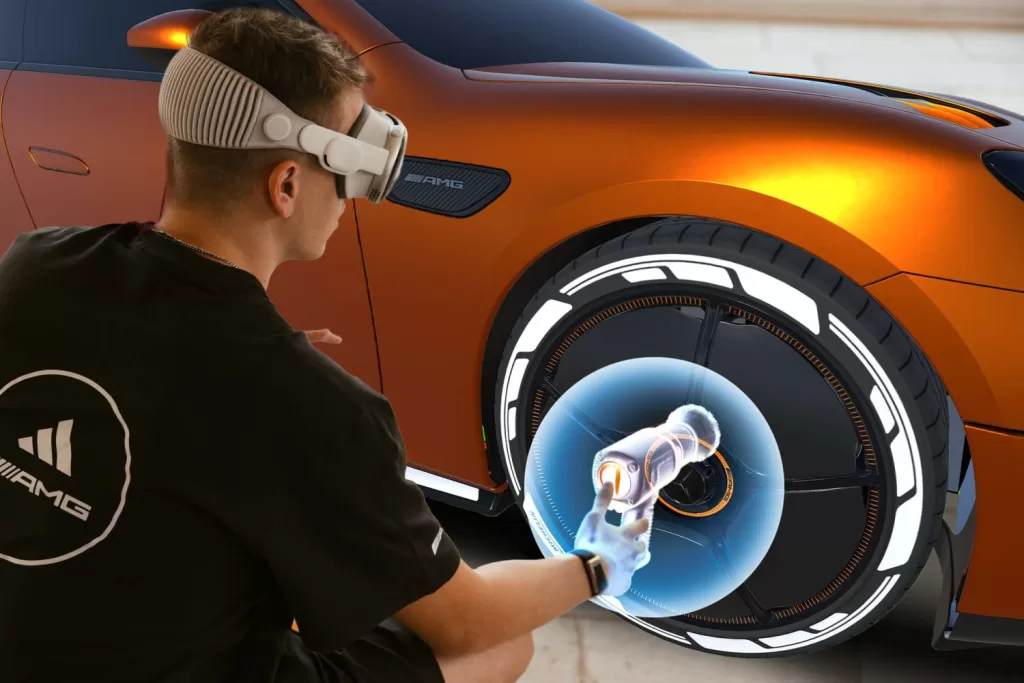
The post Mercedes-AMG GT XX Concept Redefines Electric Performance And Endurance appeared first on BenzInsider.
Mercedes CEO Urges The EU To Reconsider 2030 Green Transition Targets 28 Aug 10:17 PM (last month)
- Mercedes CEO Ola Källenius wrote an open letter to the EU, urging the organization to reexamine its 2030 green transition targets.

Mercedes-Benz CEO Ola Källenius doubts the viability of the European Union’s (EU) current policies toward the automotive industry. In his capacity as president of the European Automobile Manufacturers’ Association (ACEA), together with European Association of Automotive Suppliers (CLEPA) President Matthias Zink, he wrote an open letter on Tuesday to European Commission President Ursula von der Leyen to reevaluate the practicality of the EU’s green transition targets for 2030.
The group highlighted that it still supports the EU’s net-zero goal by 2050. However, it highlighted that the automotive landscape has changed since the EU crafted its carbon-neutral roadmap for 2030. The Mercedes CEO called for “more pragmatism and flexibility” in handling things to ensure the sustainable growth of the European auto industry along the way.
Mercedes CEO Cites Supply Chain Issues as Major Hurdle in Meeting EU Goals
One of the issues Källenius cited as a significant hurdle in keeping up with the EU’s 2030 target is the ongoing supply chain issues in sourcing components. He admitted that the European automotive industry faces “near-total dependency” on Asia for electric vehicle (EV) batteries. He pointed out that automakers within the jurisdiction constantly grapple with rising production costs to meet EU standards.
The exec cited rising electricity prices, uneven distribution of charging infrastructure, and tariffs with trade partners as factors that the EU must consider in its next discussion with key stakeholders in the auto industry. Additionally, he claimed that most customers are still wary of leaping into alternative powertrains outside of the conventional fossil fuel-fed cars.
Källenius urged the EU to introduce more incentives to manufacturers and consumers to balance out the demand side of the market. Furthermore, he said he looks forward to discussing more of the auto industry’s concerns with the EU in their next strategic dialogue.
The post Mercedes CEO Urges The EU To Reconsider 2030 Green Transition Targets appeared first on BenzInsider.
Mercedes Negotiates For Engine Supply Deal With BMW 21 Aug 10:39 PM (2 months ago)
In a major twist, Mercedes-Benz is reportedly considering outsourcing its engines from its biggest rival, BMW. According to German news outlet Manager Magazin, the three-pointed star marque is negotiating a supply deal with its competitor for four-cylinder engines. If successful, it would lead to Merc getting Bimmer engines by 2027.

In a follow-up interview with Autocar, an anonymous source within Mercedes confirmed that the automakers are already at a “high level of planning and negotiations.” The companies will likely announce the result of their talks by year’s end.
The news outlets claimed the move is part of Mercedes’ “strategic step to cut development costs.” The new engine would probably be a spin-off of the 2.0-liter turbocharged B48 of BMW, which the brand would manufacture at its factory in Steyr, Austria. Merc would integrate the powertrain with its plug-in hybrid electric vehicle (PHEV) line-up to accommodate longitudinal and transverse configurations.
Mercedes recently launched its new four-cylinder unit, the M252, paired with mild-hybrid technology in models like the CLA. However, this engine is less compatible with plug-in hybrid setups. Compounding the issue, the M252 is manufactured in China—a country that risks higher tariffs for US-bound vehicles. A potential collaboration with BMW could involve a US-based plant, eliminating tariff concerns.
The rumored deal surfaces at a time when Mercedes is rethinking its electrification roadmap. While the company once pledged to go fully electric by 2030, it has since softened its stance, with CEO Ola Källenius confirming combustion technology will remain part of its portfolio well into the next decade.
The post Mercedes Negotiates For Engine Supply Deal With BMW appeared first on BenzInsider.
Mercedes F1 Prioritizes Antonelli’s Steady Growth As Driver Than His Race Results 17 Aug 11:24 AM (2 months ago)
Mercedes F1 recently discussed its plan with rookie driver Kimi Antonelli. This is after its admission that he had big shoes to fill, being Lewis Hamilton’s successor in its racing lineup.

Mercedes-AMG Petronas Formula 1 team communications director Bradley Lord explained that Mercedes prioritizes Kimi Antonelli’s growth over immediate results. He said they want to focus on building his confidence, and above all, they want to get him more involved with the engineering team.
Antonelli, the 18-year-old Italian talent who stepped into Lewis Hamilton’s seat after the Briton’s move to Ferrari for 2025, started his F1 journey impressively. He secured fourth place in a wet Australian Grand Prix, claimed Sprint pole in Miami, and set records in Japan as the youngest driver to lead laps and post the fastest lap. A podium followed in Canada, but Antonelli’s results waned as the W16 struggled, mirroring teammate George Russell’s limited podium finishes since Miami, including a win in Montreal.
Lord attributes the dip to the car’s sensitivity to temperature changes and a problematic Imola upgrade that engineers later removed. Mercedes accepts full blame for these issues and commits to delivering a more predictable machine.
The official revealed that they are encouraging Antonelli to reflect on the insights gleaned from the previous events, and not to fixate his attention too much on race results. He urged the driver to spend time with the engineers to extract maximum information.
Hamilton notably vouched for Antonelli before jumping to Ferrari. He called what he was doing “fantastic” and expected the young driver to achieve more as he built experience with Mercedes.
The post Mercedes F1 Prioritizes Antonelli’s Steady Growth As Driver Than His Race Results appeared first on BenzInsider.
BRABUS Unveils the XLP 800 6×6 Adventure: A Six-Wheeled Off-Road Beast 12 Aug 11:51 AM (2 months ago)
- BRABUS recently pushed the limits of the Mercedes-AMG G 63 with the creation of the XLP 800 6×6 Adventure.
- The six-wheeled off-roader comes packing with a twin-turbo V8 engine producing up to 800 hp and 1,000 Nm torque.

BRABUS has long pushed boundaries, and its latest creation, the XLP 800 6×6 Adventure, stands as a testament to that legacy. Based on the Mercedes-AMG G 63 from the W 465 series, this pickup transforms the iconic G-Class into a six-wheel-drive beast designed for extreme terrain while delivering supercar-level performance.
Measuring over 20 feet long, it combines rugged engineering with luxury refinements, appealing to adventurers who demand both capability and exclusivity.
Appearance
At the core of the XLP 800 6×6 Adventure’s imposing off-road presence is a custom steel frame extension that lengthens the wheelbase by about 60 inches to accommodate three portal axles. These axles provide an impressive 18.6 inches of ground clearance and superior articulation, allowing the vehicle to tackle rough landscapes with ease.
Developed in partnership with KW, the adjustable suspension system lets drivers fine-tune damping rates from the cabin. All six wheels are shod in 325/55 R22 all-terrain tires mounted on forged 9.5Jx22 Monoblock HD rims, optimized for heavy loads and wide fender arches.
The BRABUS Widestar body kit adds aggressive flair with exposed carbon fiber elements, including fender flares, a radiator grille surround, and a hood power bulge. Practical features abound: a front winch rated for nearly 10,000 pounds, LED-lit roof rack, power-retractable steps, and illuminated running boards enhance usability in challenging conditions.
Powertrain
Power comes from a tuned 4.0-liter twin-turbo V8 engine, boosted to 800 horsepower and 737 lb-ft of torque through custom turbochargers, mapping for injection and ignition, and a nine-speed automatic transmission. This setup propels the hefty pickup from zero to 62 mph in 5.8 seconds, with top speed capped at 130 mph due to the tires.
Additionally, stainless exhaust with active valves offers modes from quiet to aggressive V8 rumble, exiting through carbon-trimmed side pipes. The drivetrain uses high-performance Motul lubricants, ensuring reliability across all six wheels.
Cargo Hold
The exterior’s matte black finish extends to a functional cargo bed with teak wood lining, lockable boxes, and aircraft-style tie-downs. A dual roll bar with LED lights aids nighttime loading, while the cab’s new rear wall includes a heated window for visibility.
Interior
Inside, the Masterpiece interior exudes craftsmanship with black leather and Dinamica microfiber upholstery. Quilted “Dual Cube” patterns adorn seats, doors, and headliner, perforated for climate control. Moreover, red accents on over 200 elements—from switches to door pins—add sporty contrast, complemented by carbon fiber trim on the steering wheel and pedals.
Meanwhile, backlit logos and auxiliary gauges for rear passengers add more flavor to the already astonishing aura of the auto.
Price Tag of the BRABUS XLP 800
Starting in 2025, each XLP includes a blockchain-based digital passport via NFC for ownership verification, combating counterfeits. Built to order with full customization options, this model lists at 1,161,000 euros (export price, excluding VAT). Fuel consumption averages 11.7 mpg combined, with 420 g/km CO2 emissions under WLTP standards.
BRABUS continues redefining adventure vehicles since launching the XLP line in 2020, blending G-Class heritage with innovative tech for unmatched versatility.
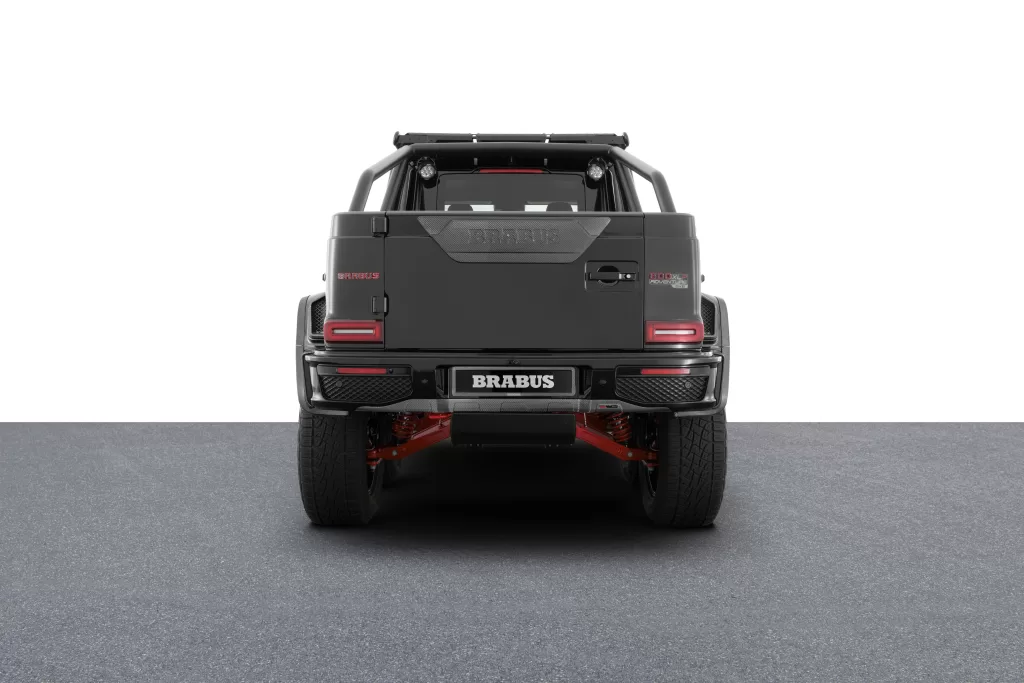


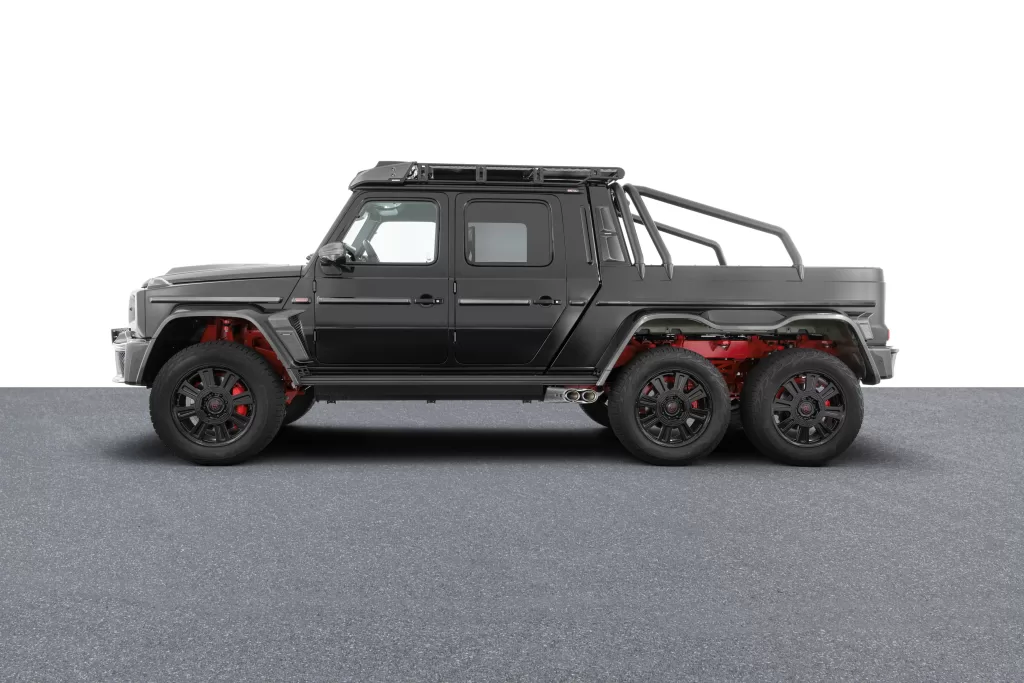
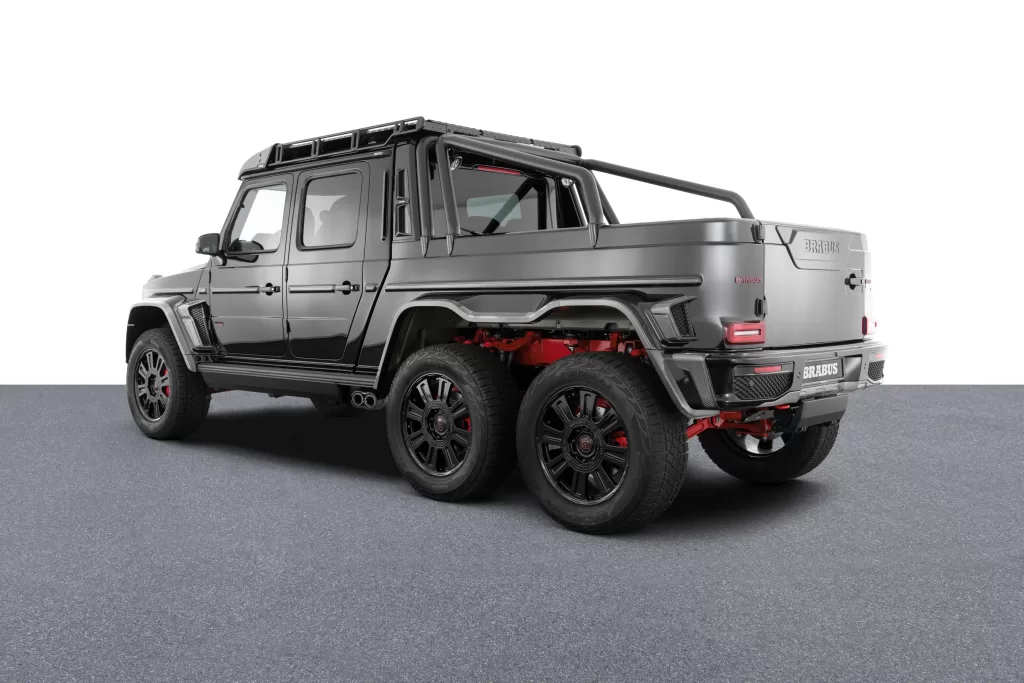
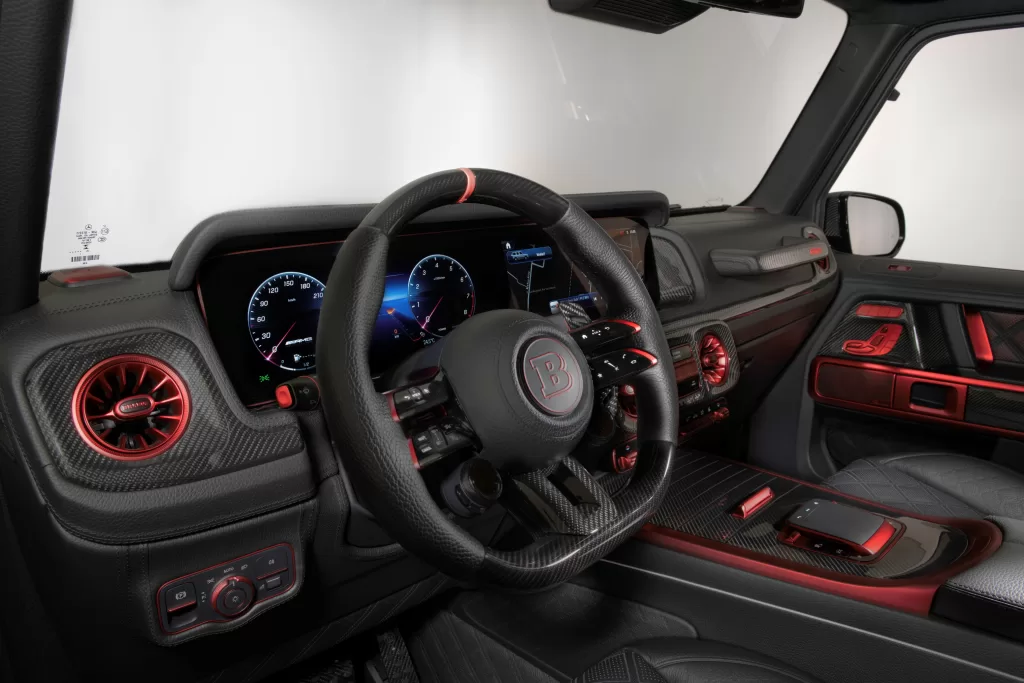
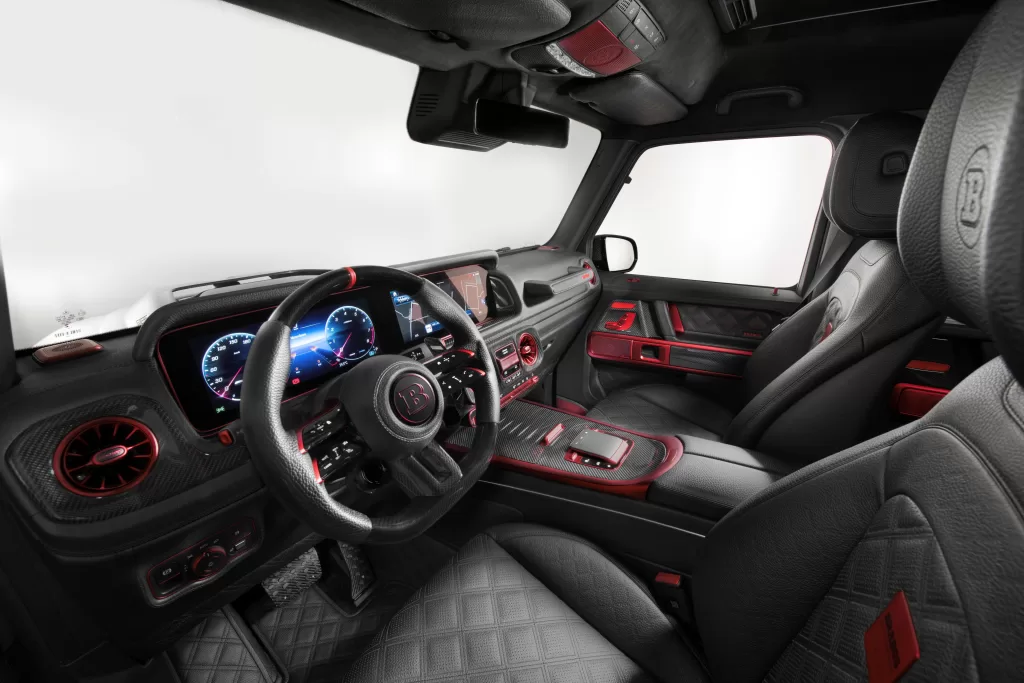
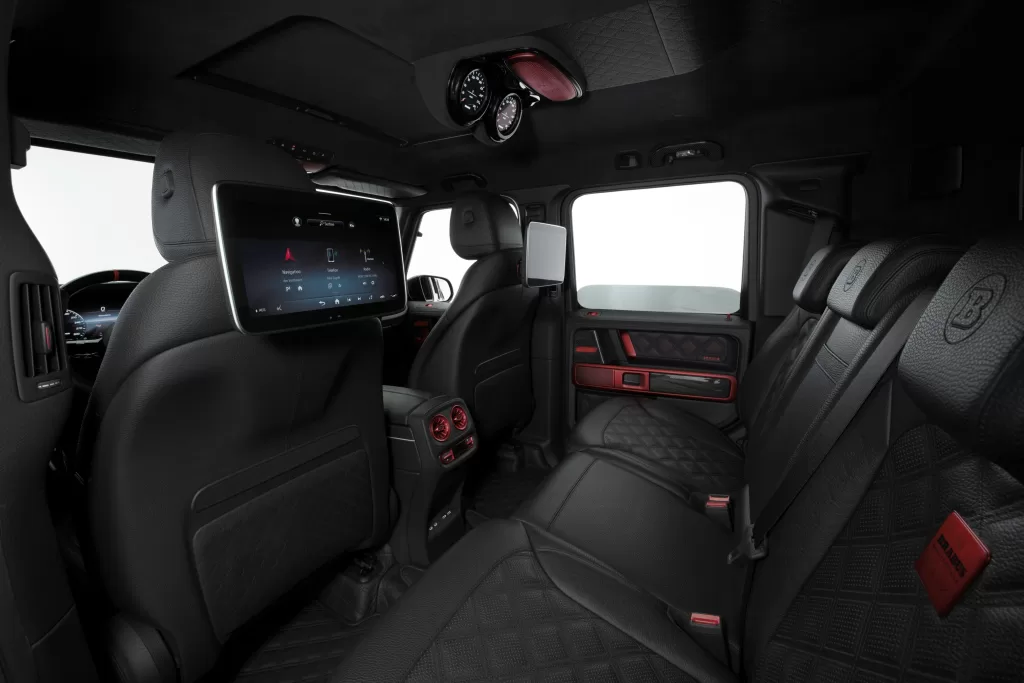
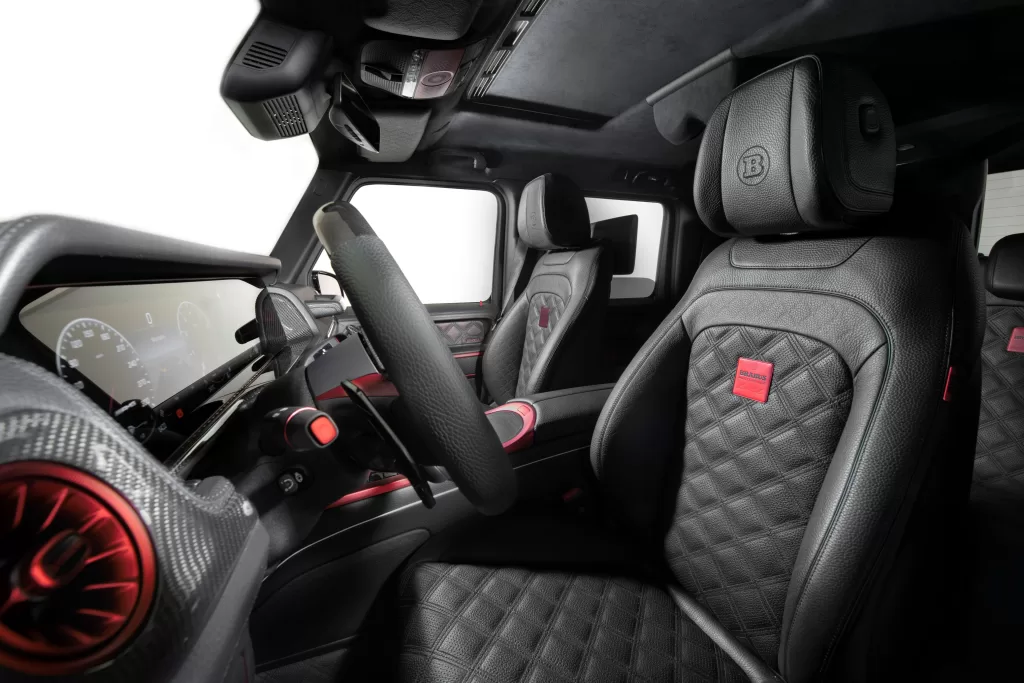
The post BRABUS Unveils the XLP 800 6×6 Adventure: A Six-Wheeled Off-Road Beast appeared first on BenzInsider.